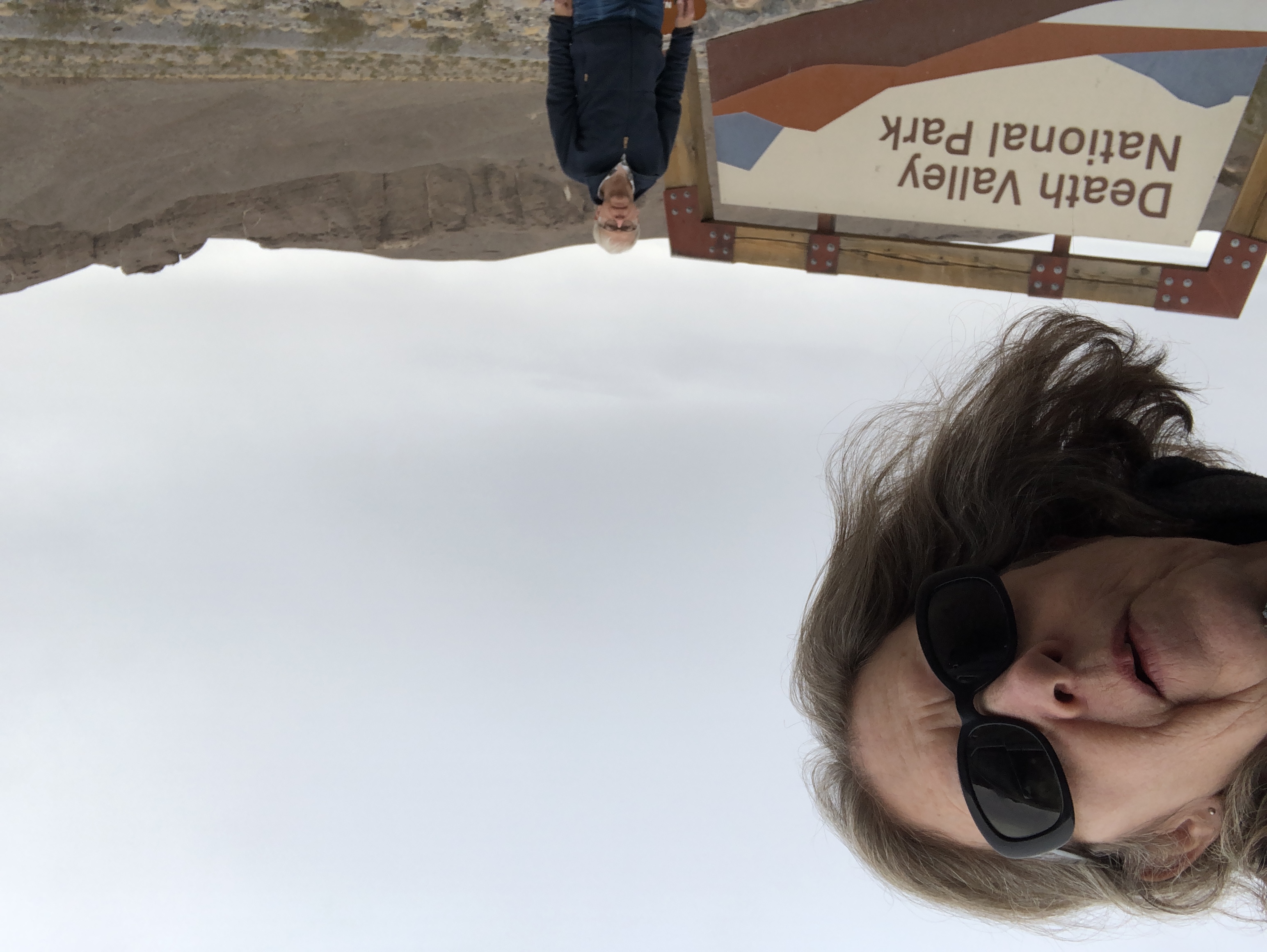
It’s been a while since we’ve been on the road, but we’re back,
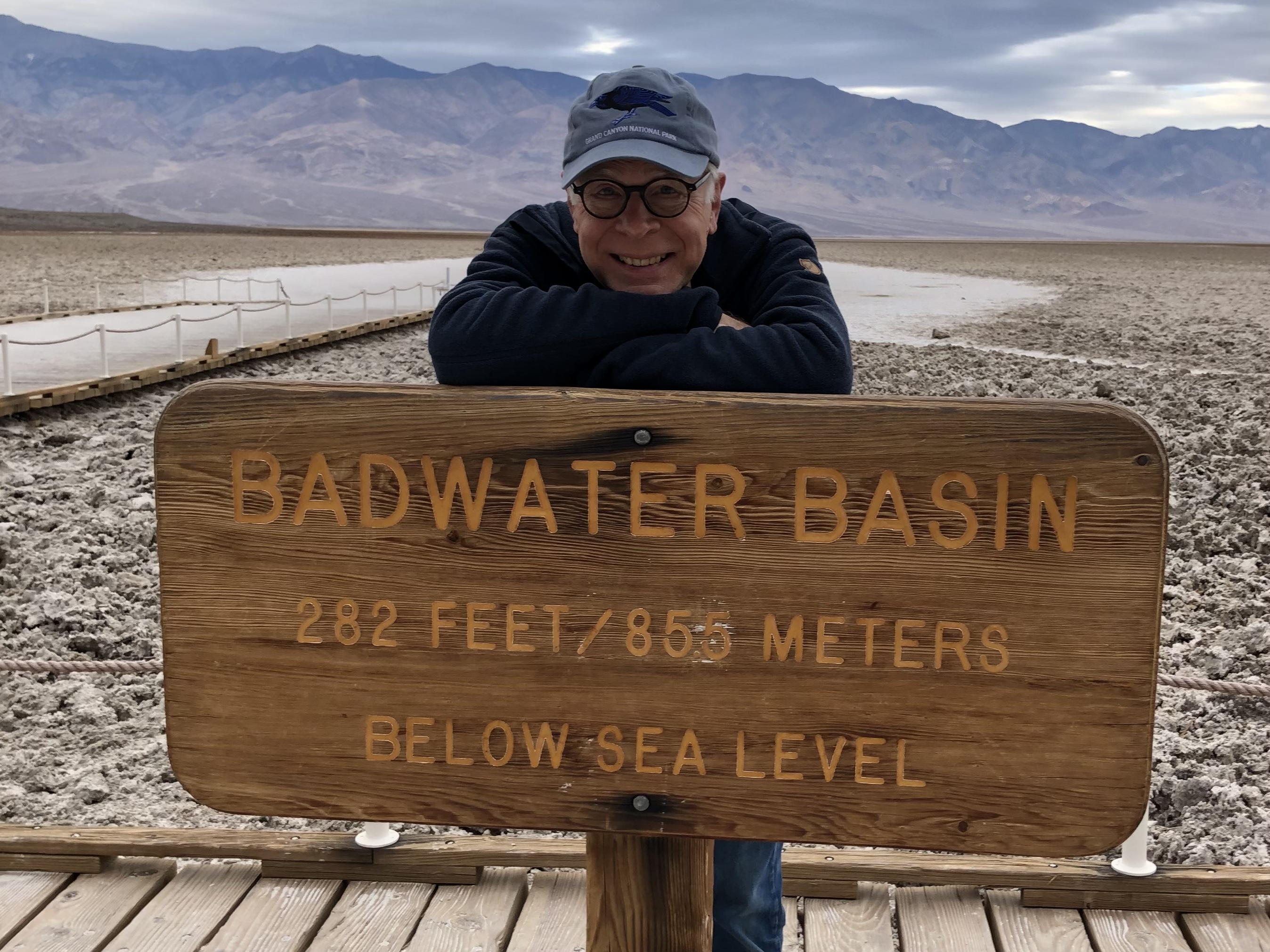
starting at the lowest point in the Western Hemisphere
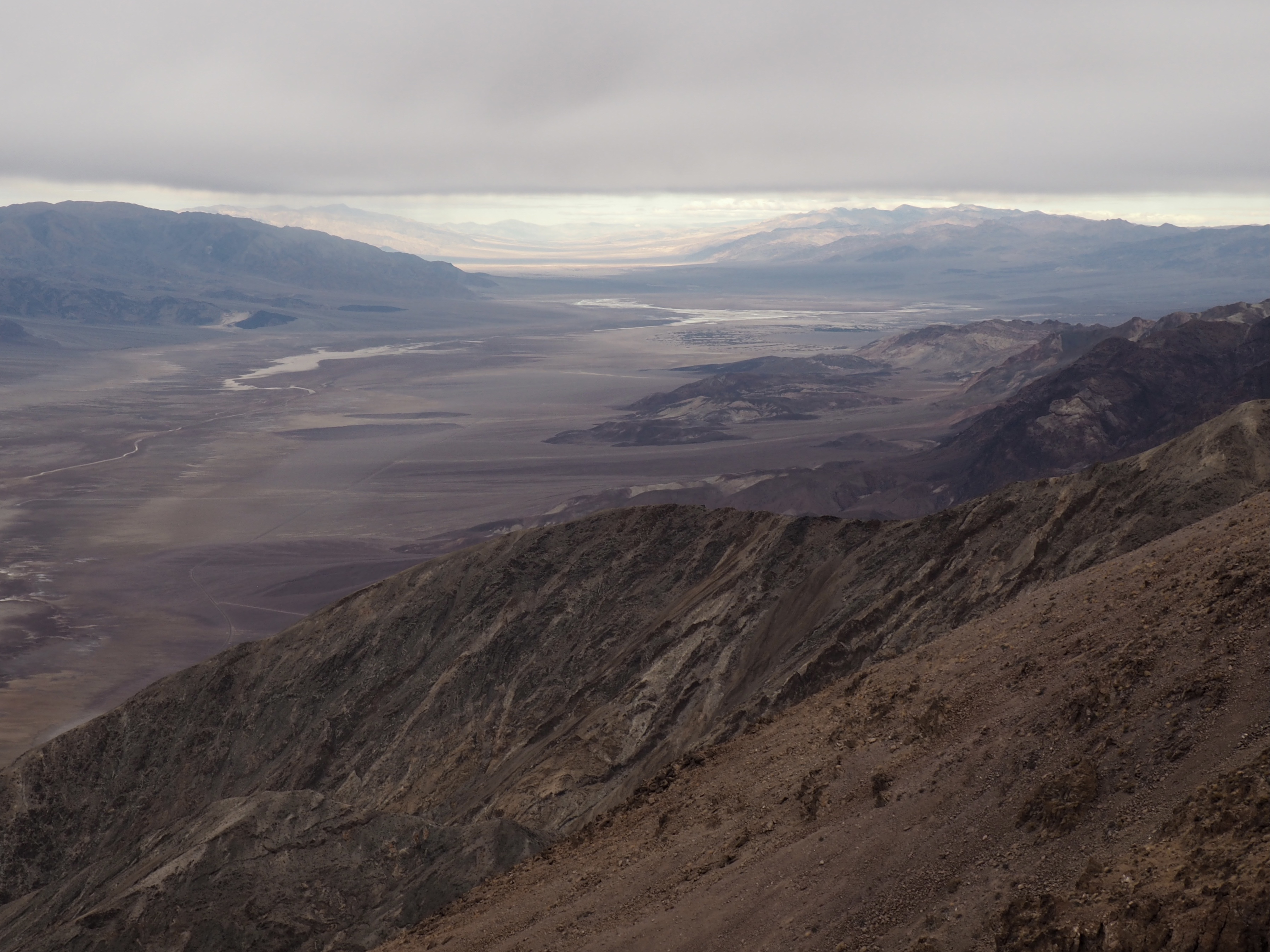
where countless years ago an enormous lake evaporated leaving
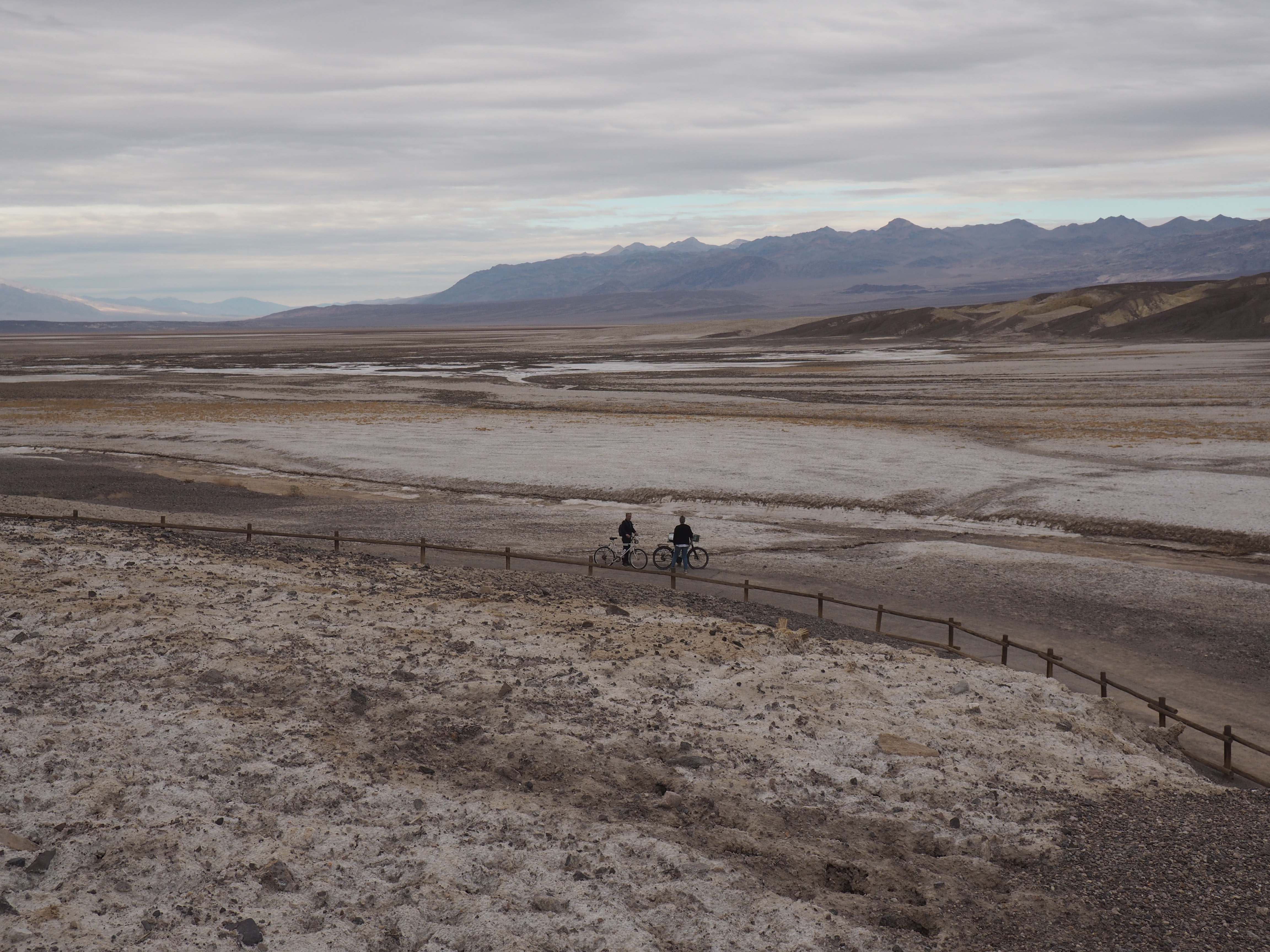
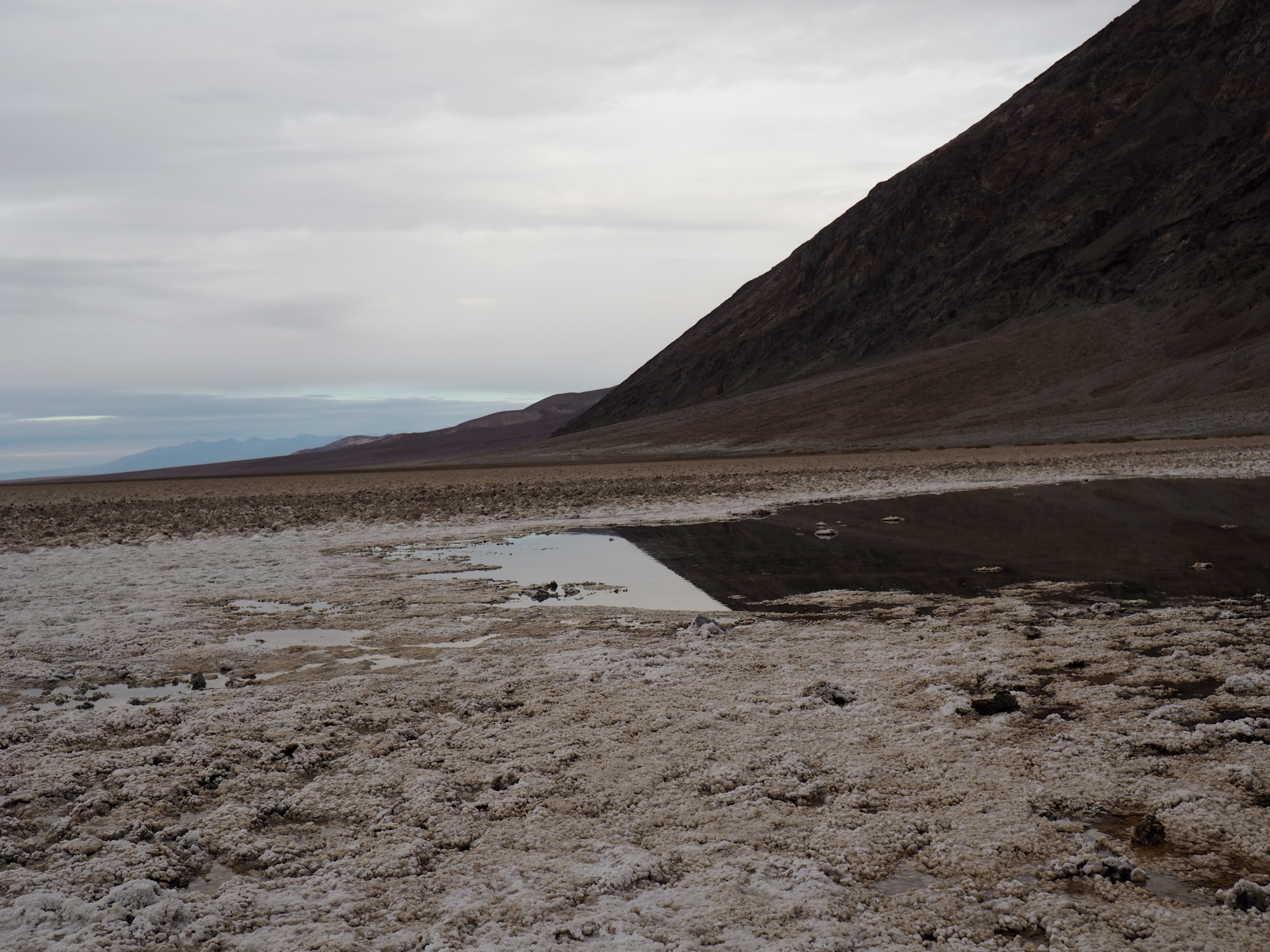

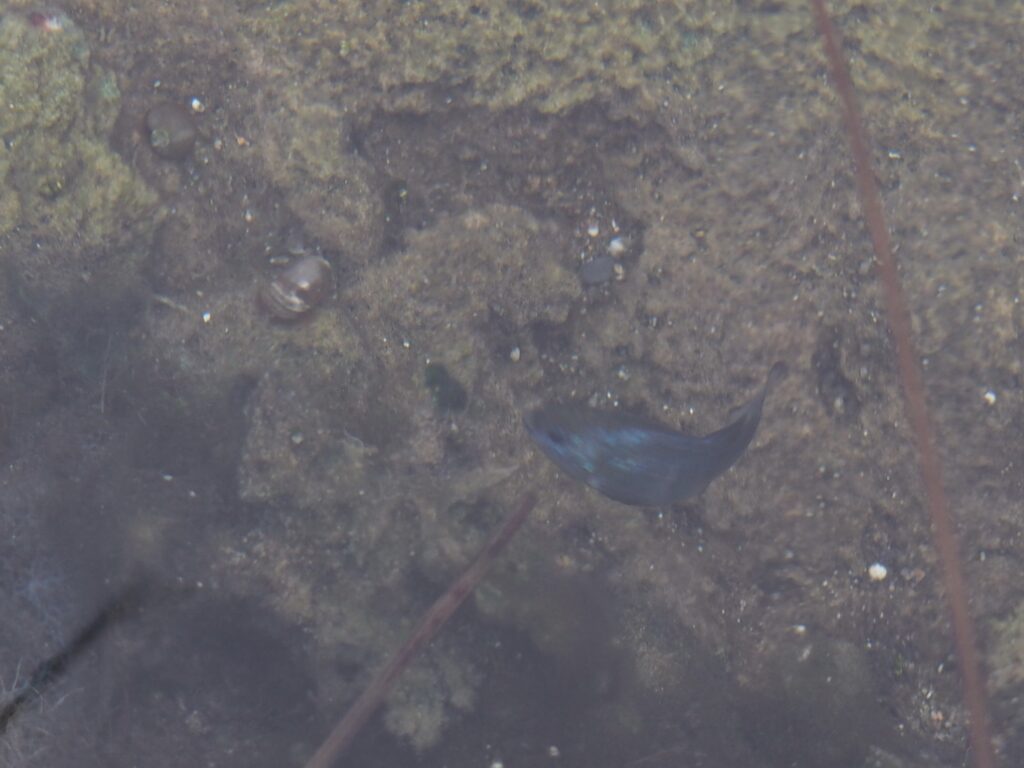
An Amargosa Pupfish representing one of five distinct species of Pupfish separately evolved in isolated pools when the lake evaporated.
vast salt flats and a handful of scattered pools of brackish water (more salty than the ocean) sheltering remnants of the ancient lake’s fish, now among the 26 species within the park found nowhere else on earth.

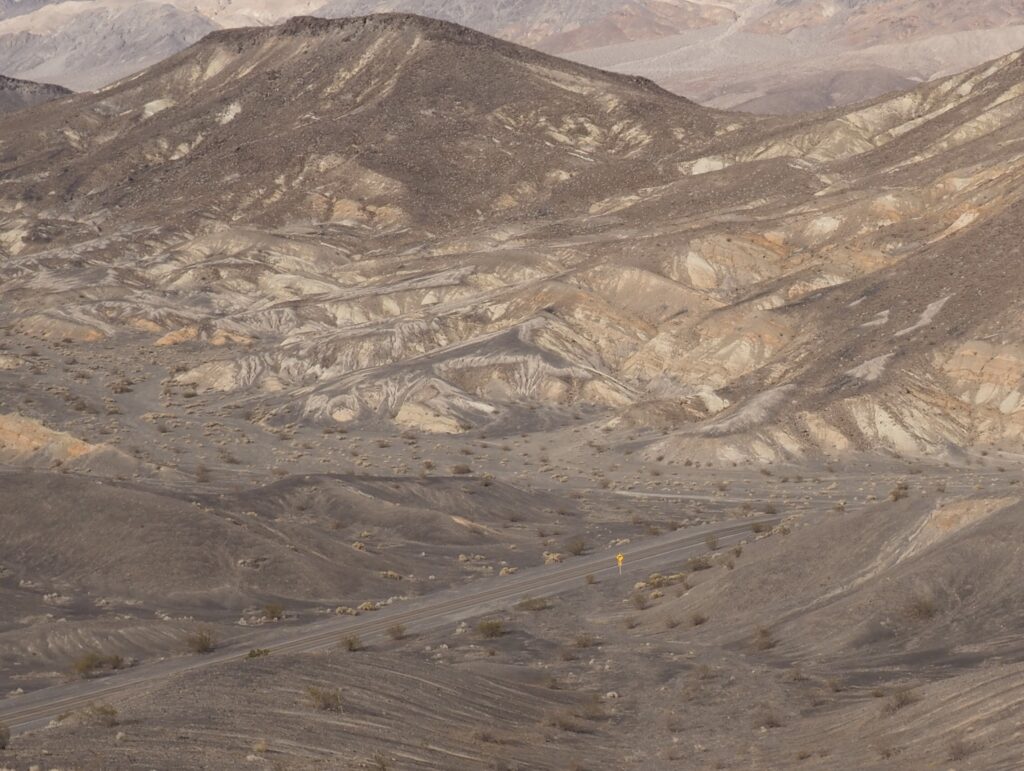
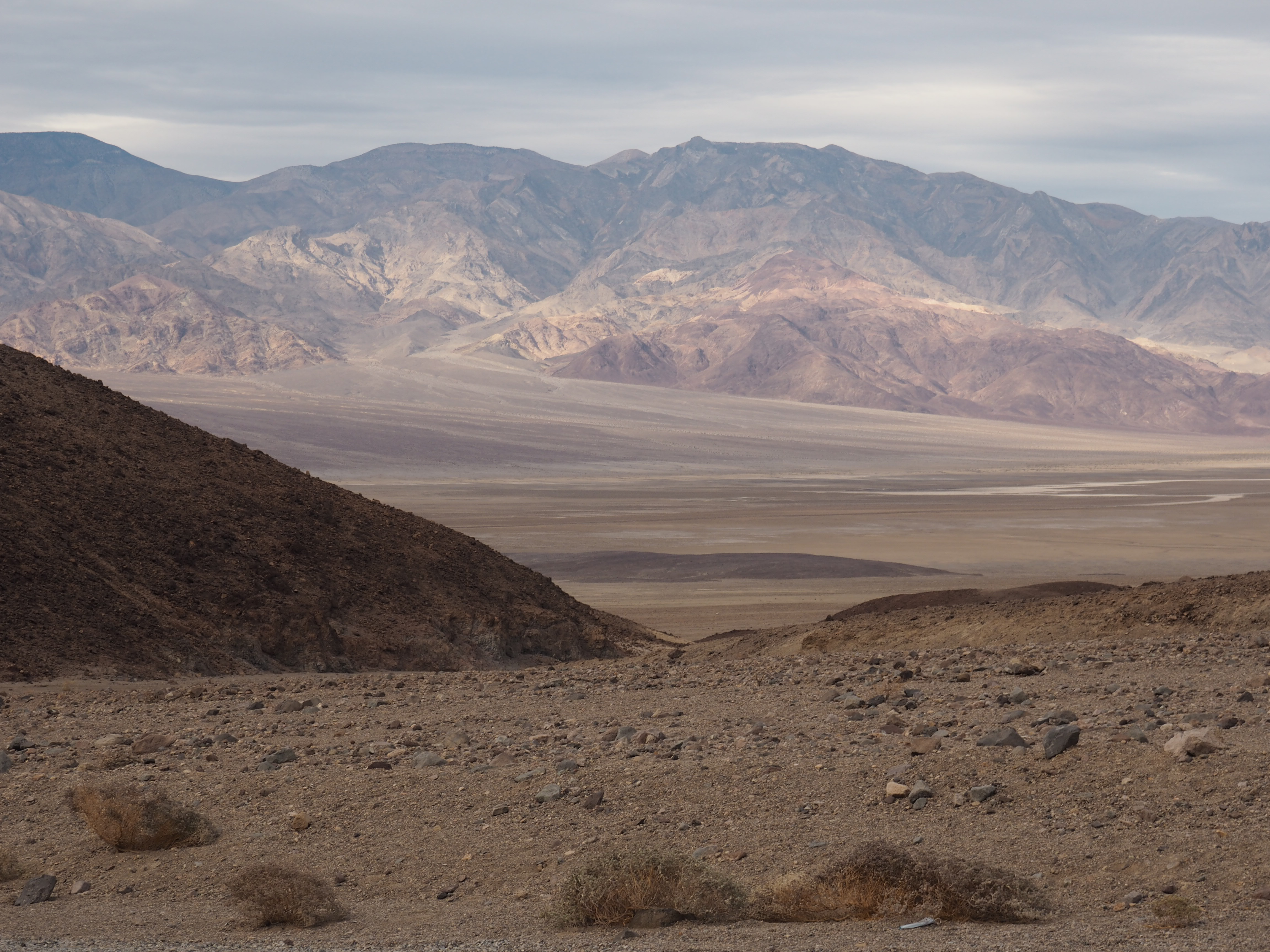
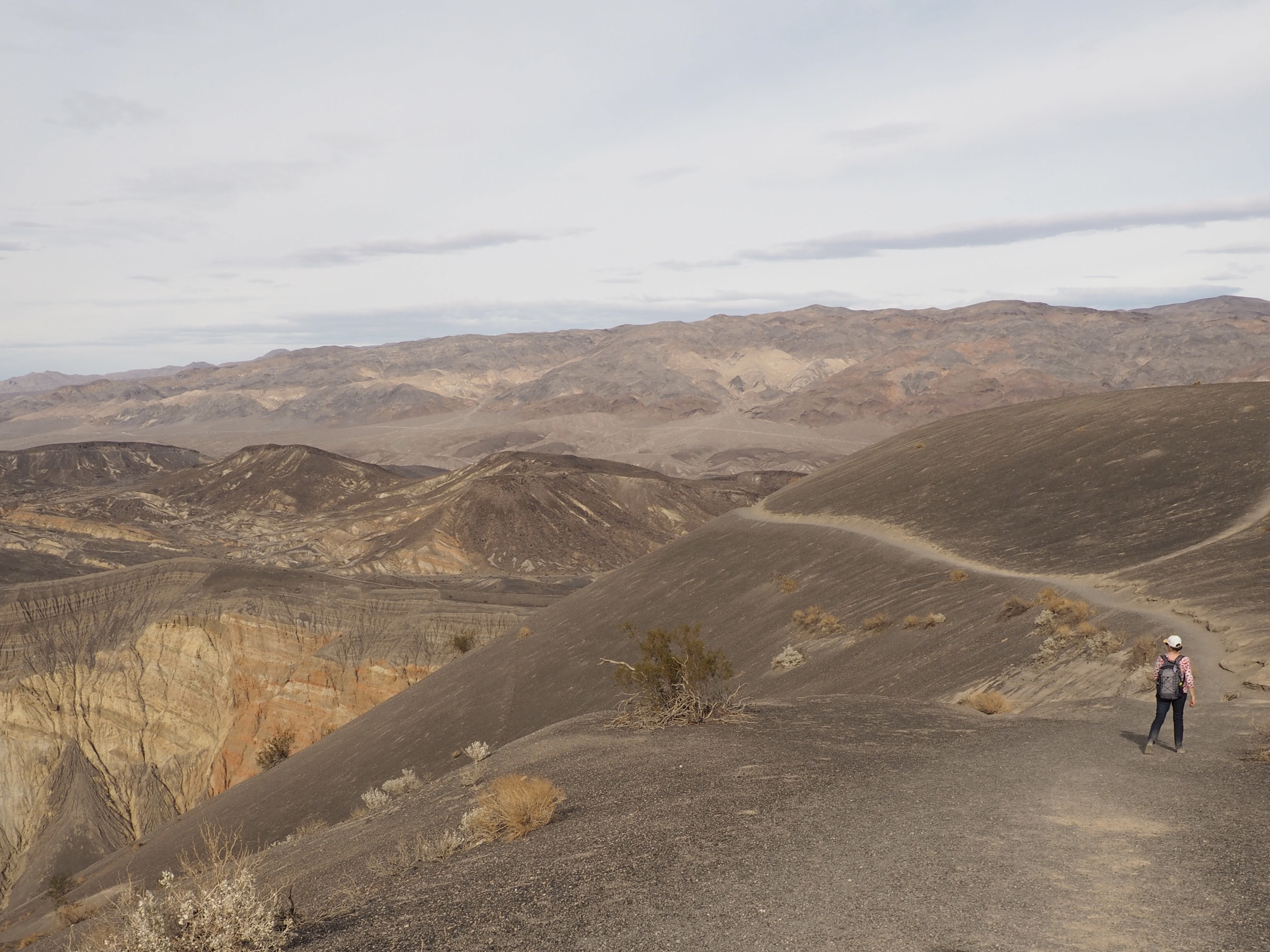
Walking the rim of a volcano that erupted 2,000 years ago.
It’s not difficult to understand how Death Valley got its name and why immigrants struggled to cross such a formidable landscape
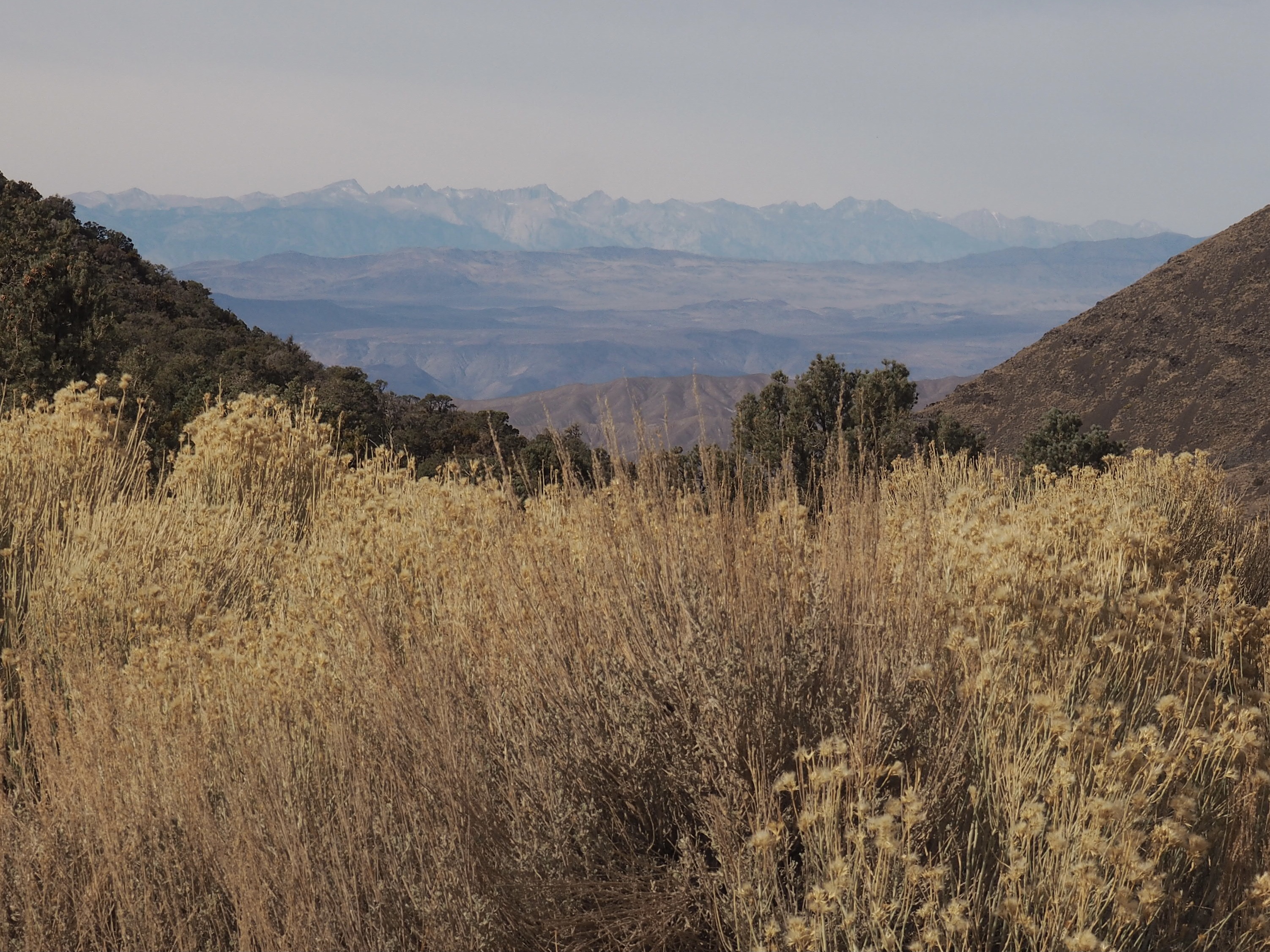
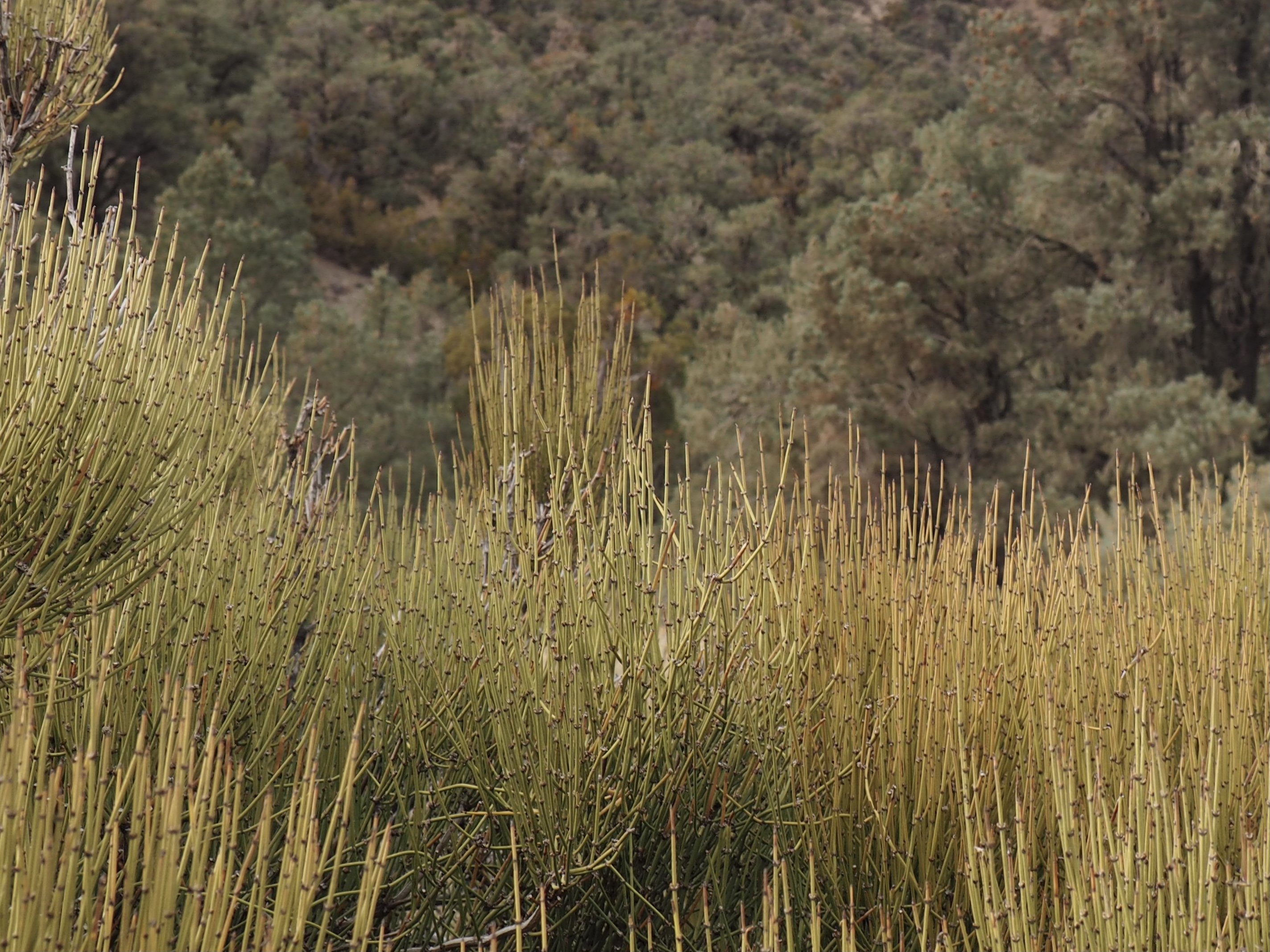
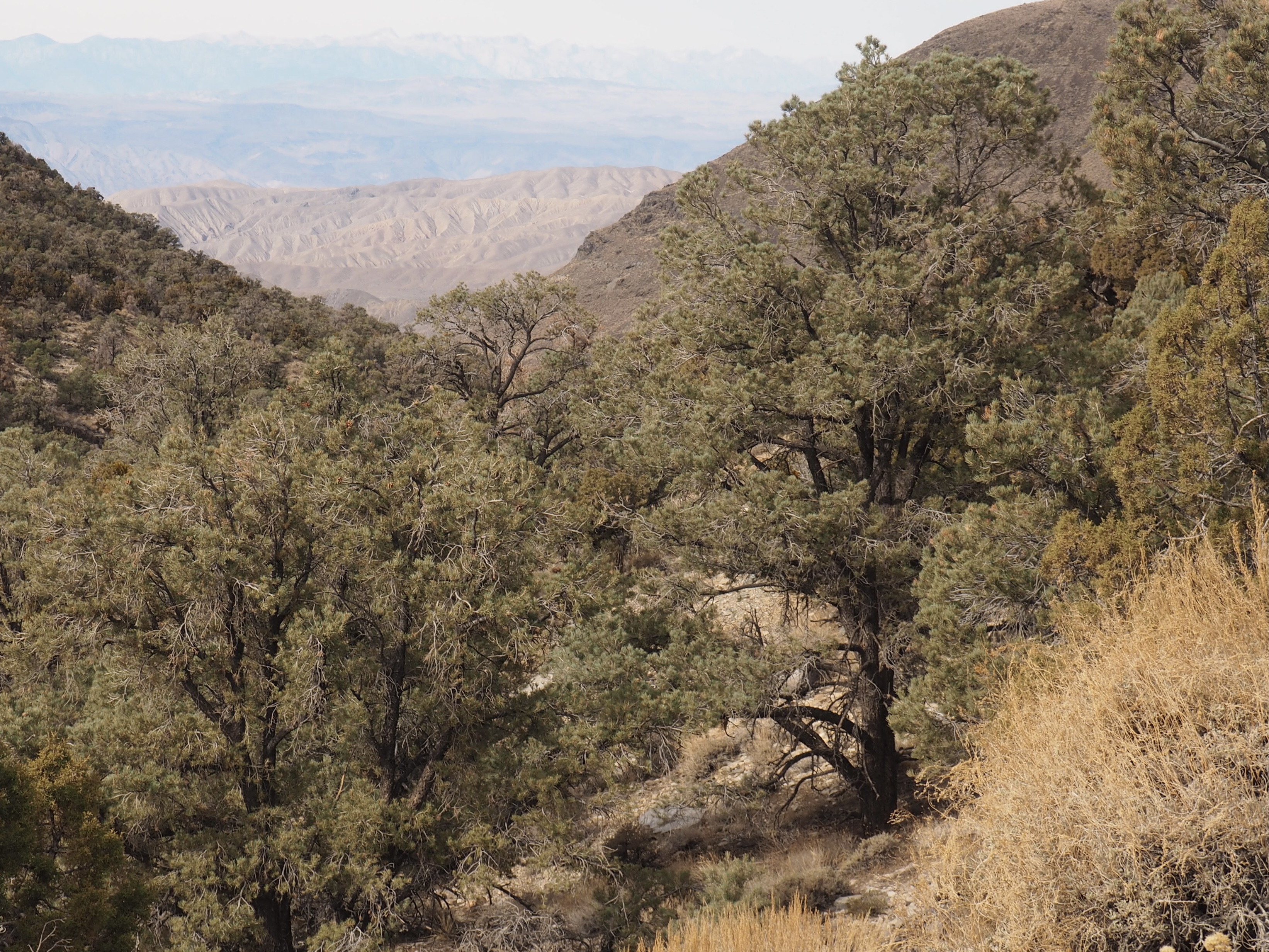
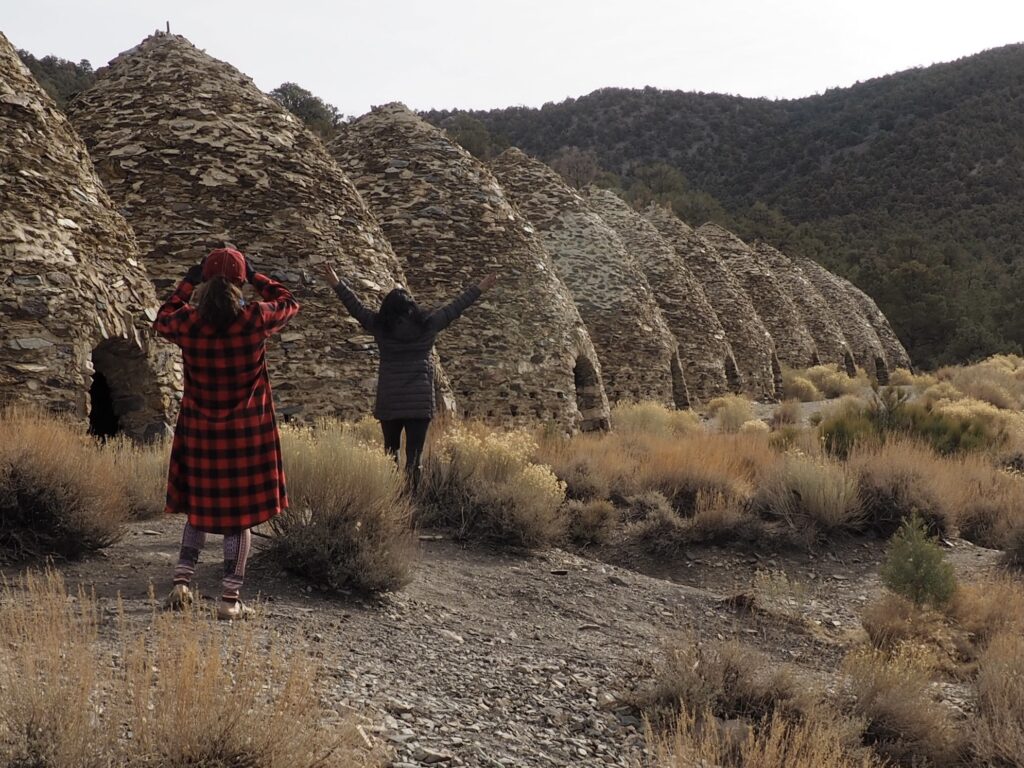
These charcoal kilns were built in the Panamint Mountains in 1876 and provided fuel for the processing of silver and lead ore.
bordered by high rugged mountains,
with salt encrusted streams lined with pickle weed
and not much when it comes to finding an oasis.
What brought people and investment to Death Valley was the prospect of wealth from the various forms of white gold: silver, lead, and that still touted laundry additive, borax, that’s the white crust on the valley floor. Of course, according to the signage, the number of mules pulling that 20 mule team train could at times vary in number. Is nothing sacred?
Santa Barbara

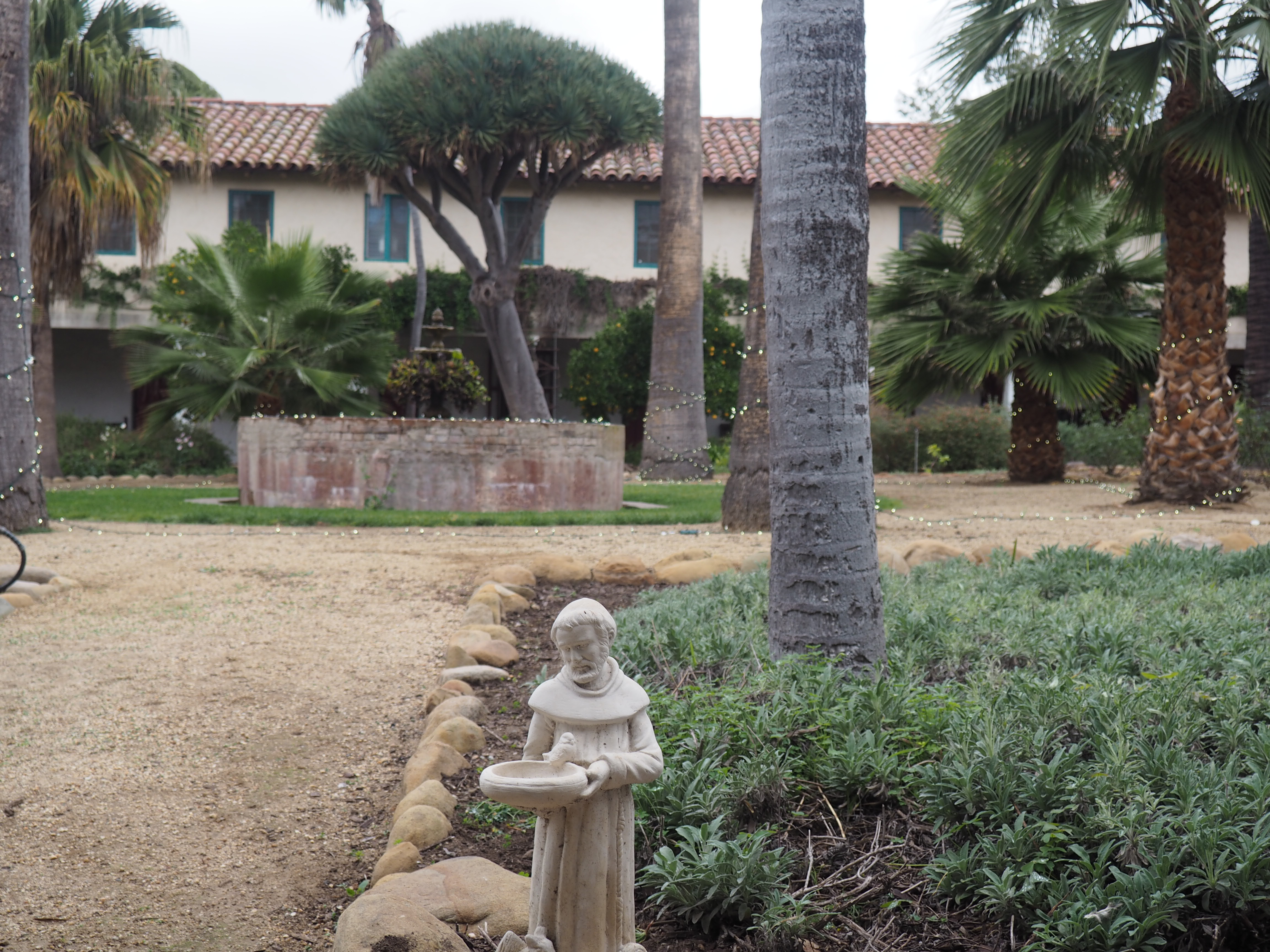
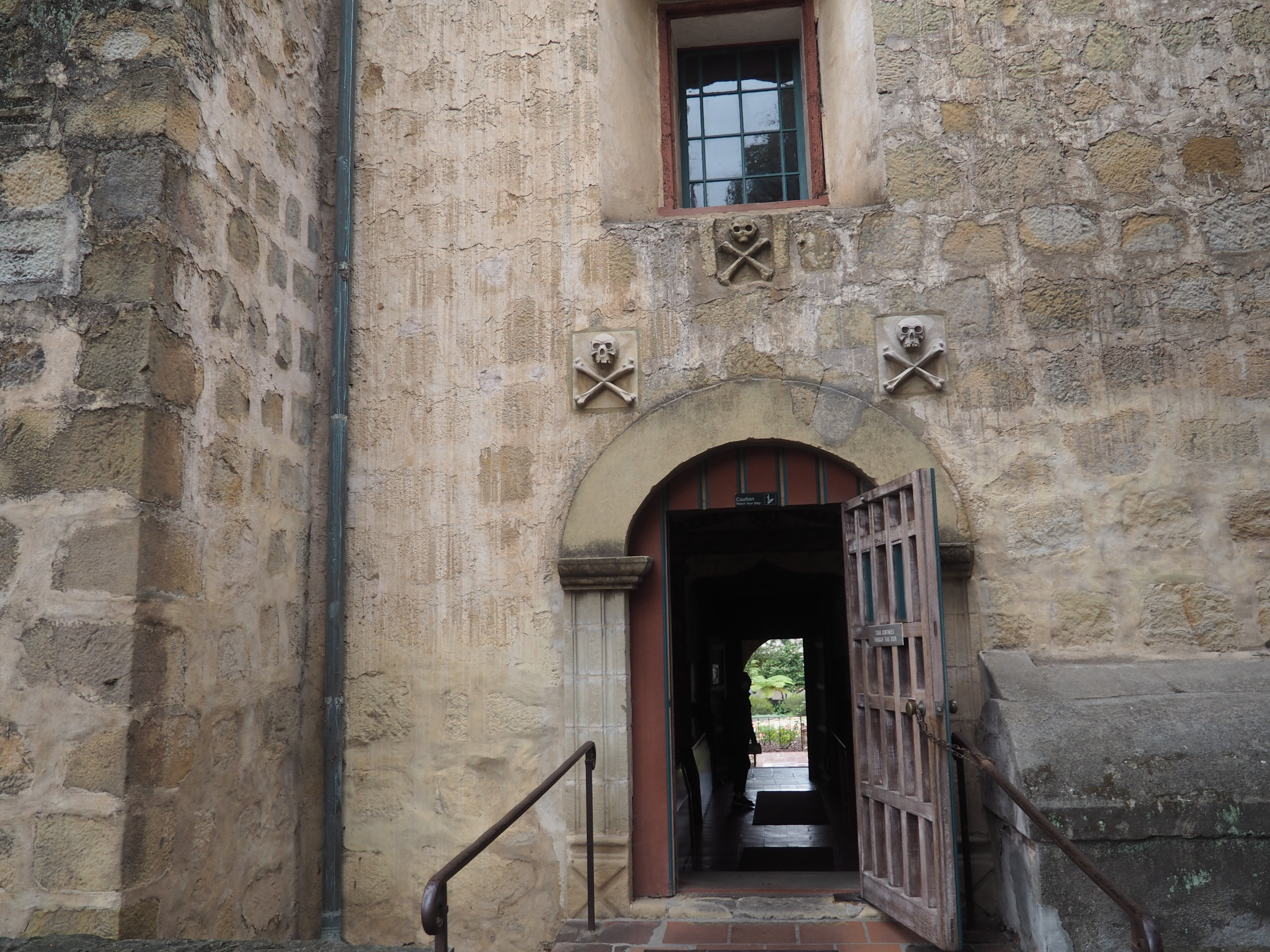
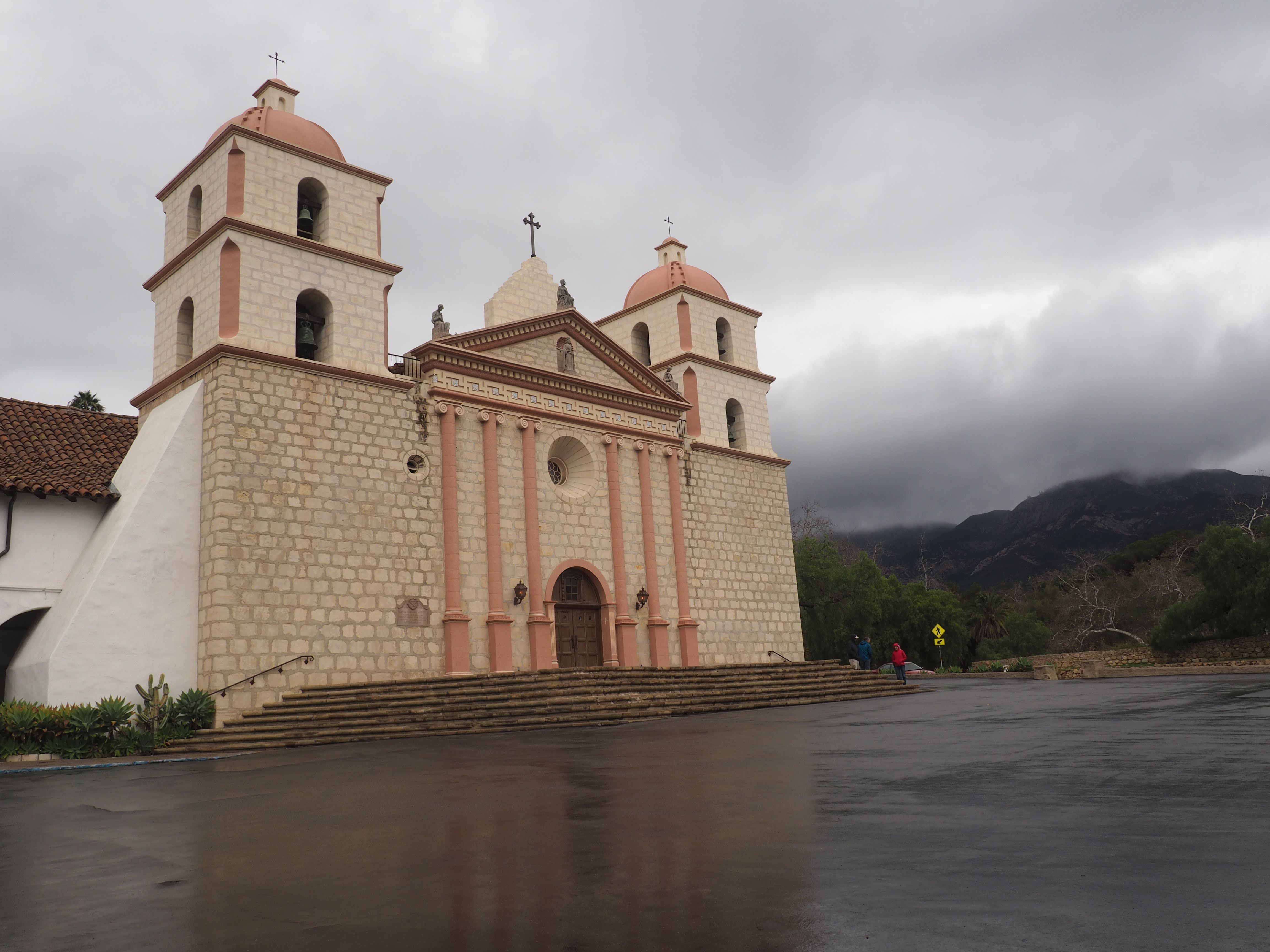
As the seat of the Diocese of both Baja and Alta California, in its day, the Mission has the architecture of a cathedral church. 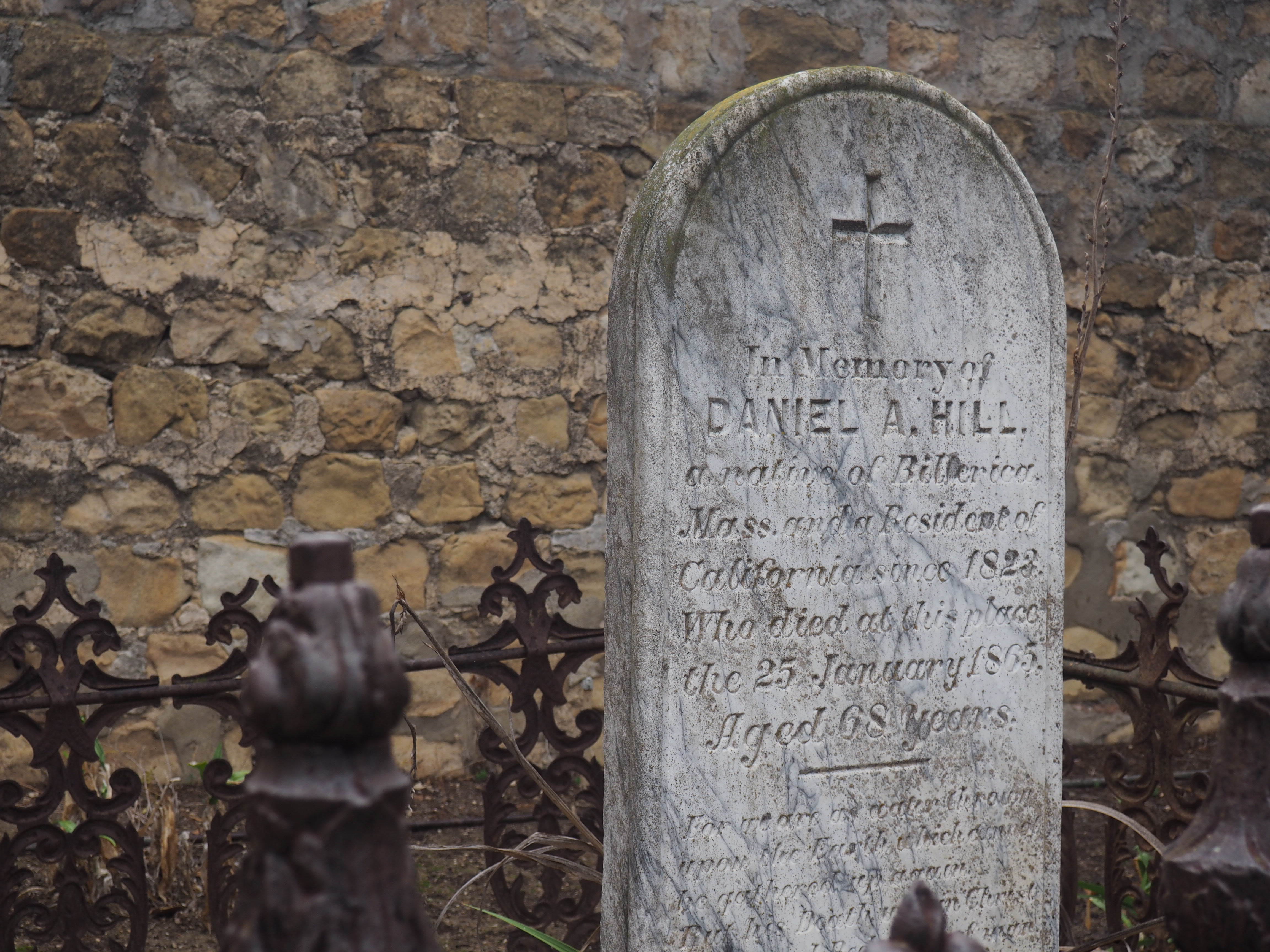
After the Mexican government secularized the Missions (1833), Daniel Hill assured continued Franciscan control by buying it.
Moving on to the coast, we visited Santa Barbara, starting with the Spanish Mission where the Franciscans undertook to convert the Natives (the Chumash tribe) from the late 18th century
and the Presidio (i.e. military fort) from the same time period. The beginnings of the Presidio were apparently constructed with Chumash labor that was bargained for, although upon the arrival of the Franciscans this, as we know, changed. For those of us a little rusty on our history, the Spanish moved into what we know as California beginning in 1769 (at San Diego), the settlers revolted and declared independence as Mexico in 1821, the United States acquired (Alta) California through the Mexican-American war (loathed by Lincoln) in 1846 and California was hurriedly granted statehood in 1848 when gold provided a good reason to do so.
Our good reason for stopping by Santa Barbara was a chance to catch up with Amanda’s Uncle Howard and his friend Madeleine, whose favorite place for a special occasion lunch and stroll through the grounds is the San Ysidro Ranch where JFK and Jackie had their honeymoon. We quickly understood why and were impressed with the number of gardeners hard at work to maintain that luxurious look (and where the food, by the way, matched the ambiance).
On the Way to LA
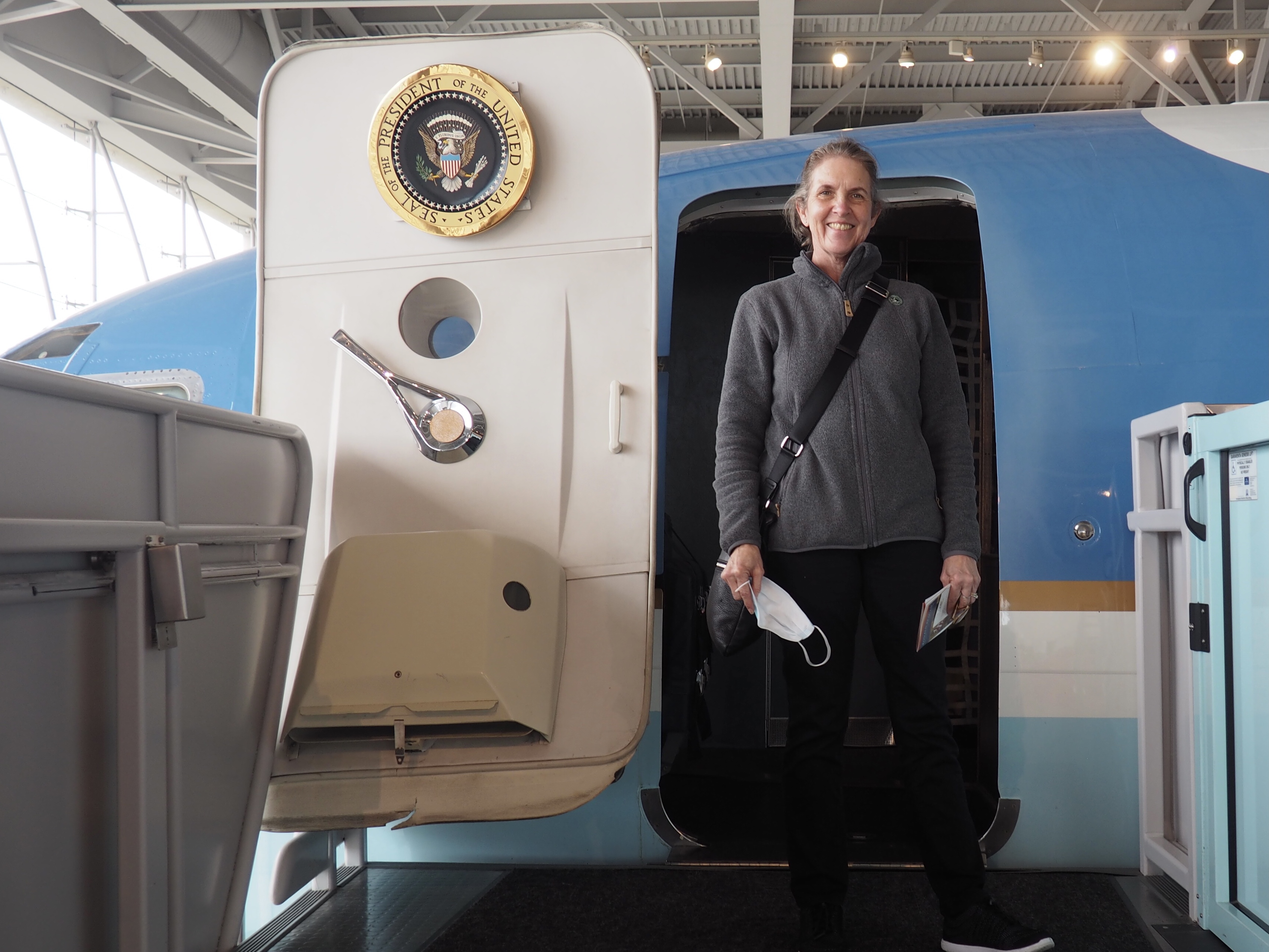
Boarding Air Force One 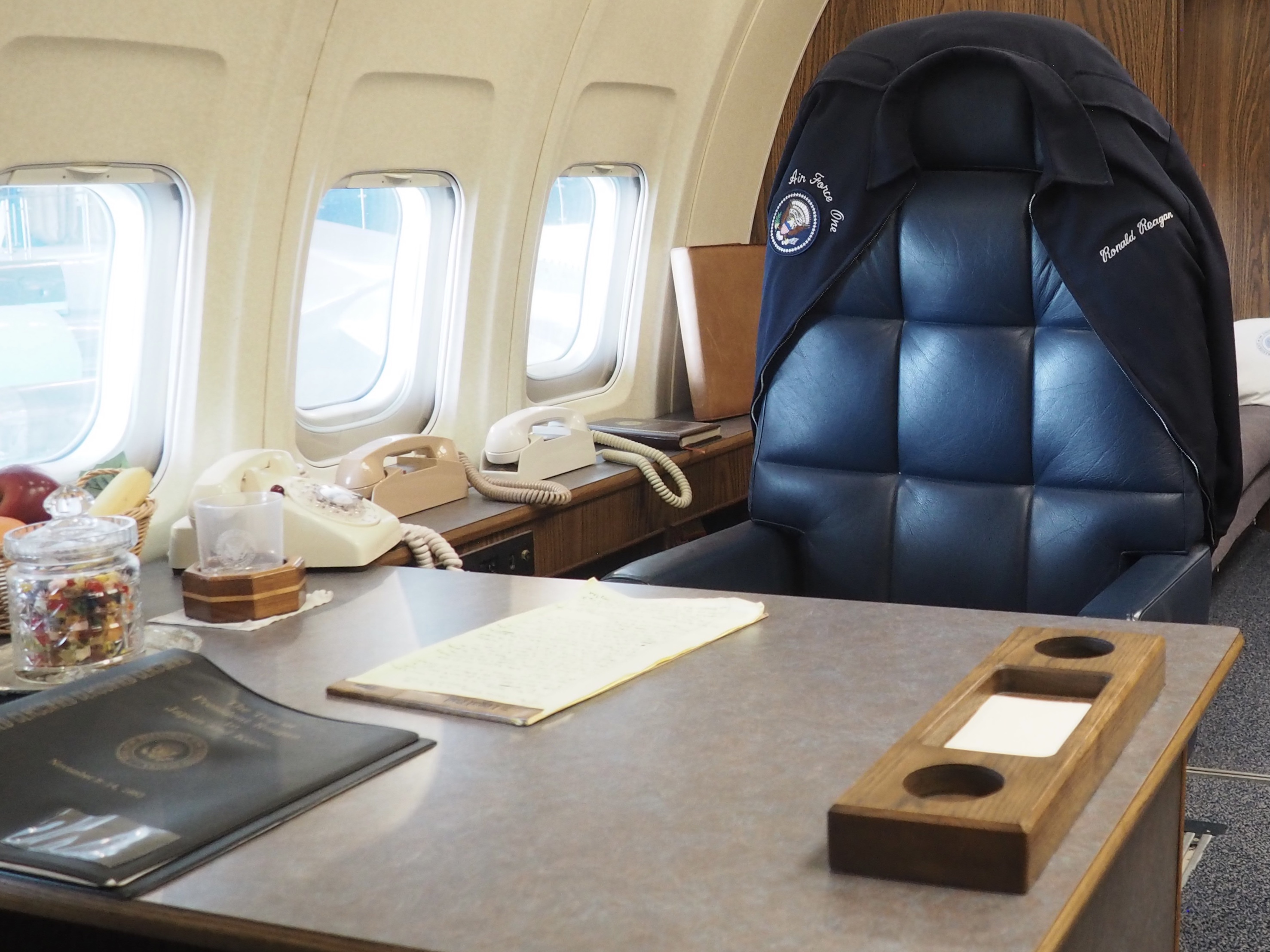
Surprisingly cramped quarters for the
Head of State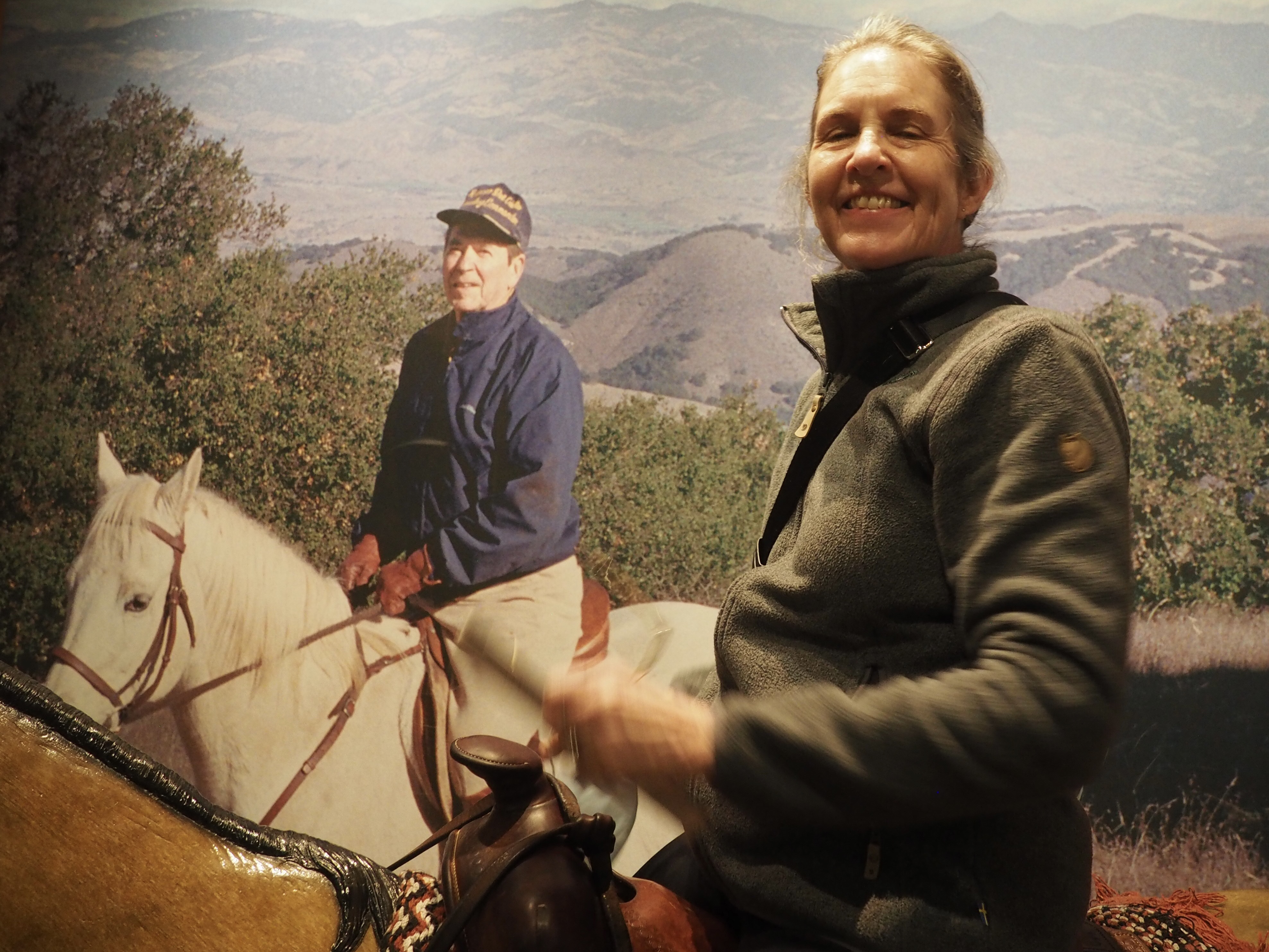
A ride through the hills 
Bonnie & Clyde’s final ride toured the country for years after (well, maybe you’ve seen one of the movies) 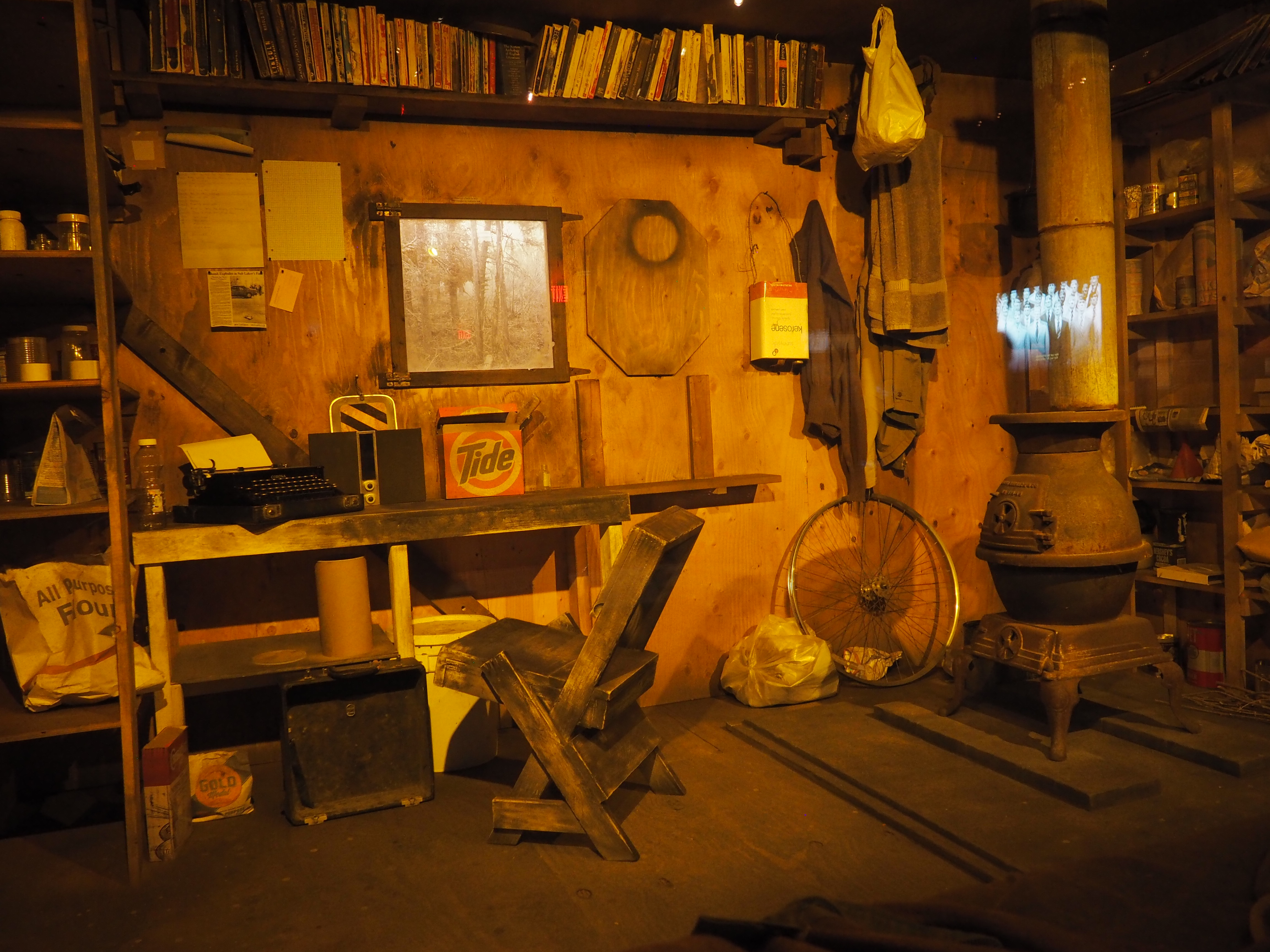
Ted Kaczynski’s hideout
(alias “The Unibomber”)

Steering the Nation along a Wiser Path
When we learned that the Reagan Presidential Library was on our way to LA, we decided to stop by. Amanda has always wanted to see Air Force One, but was surprised that Reagan rode a 707 prior to the more recent upgrade to the dramatically more spacious 747s. A bonus was an FBI exhibit that trotted out all the more famous exploits and souvenirs of the G-Men (and Women).
San Juan Capistrano

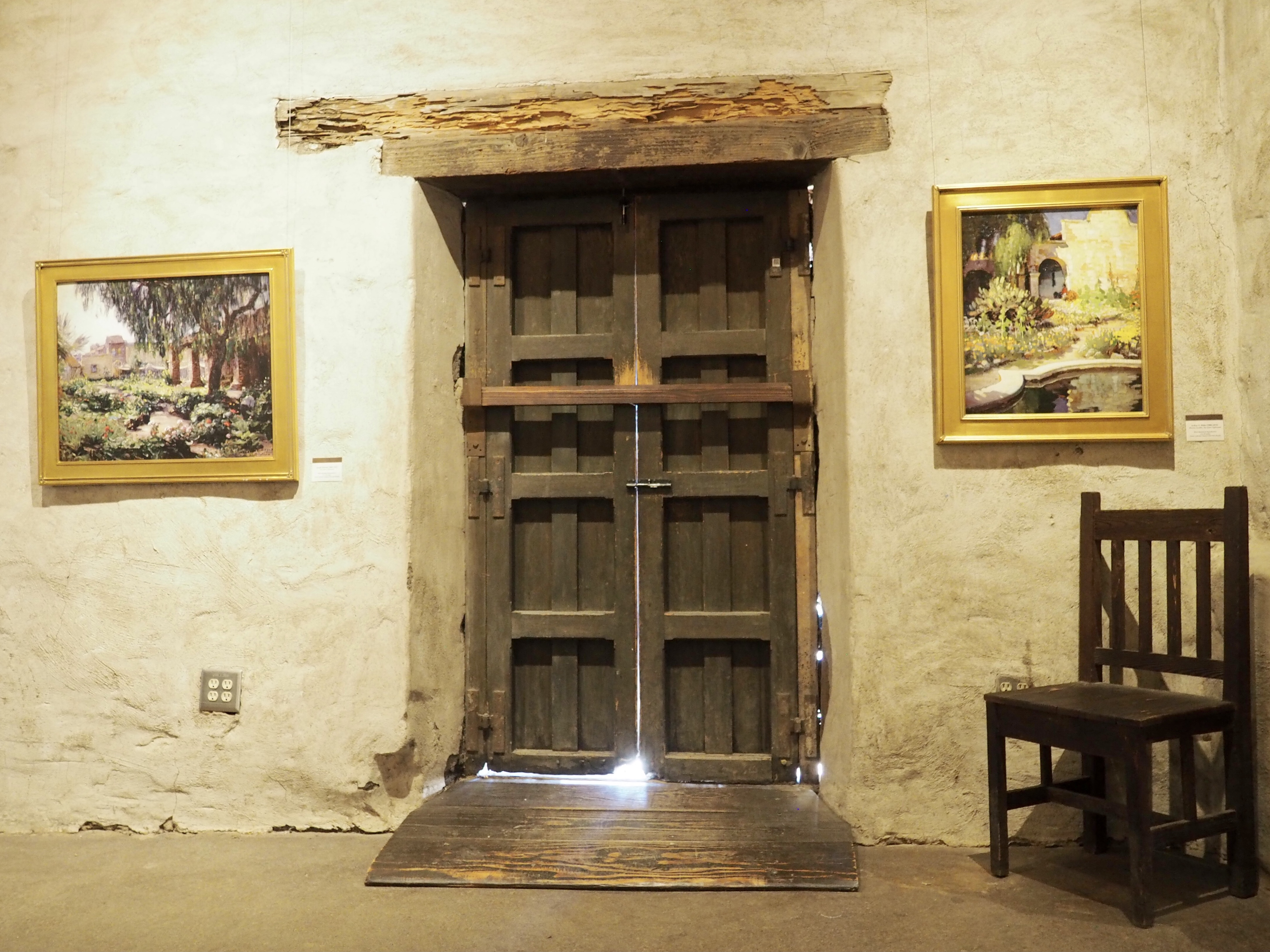

Great Stone Church destroyed by 1812 earthquake 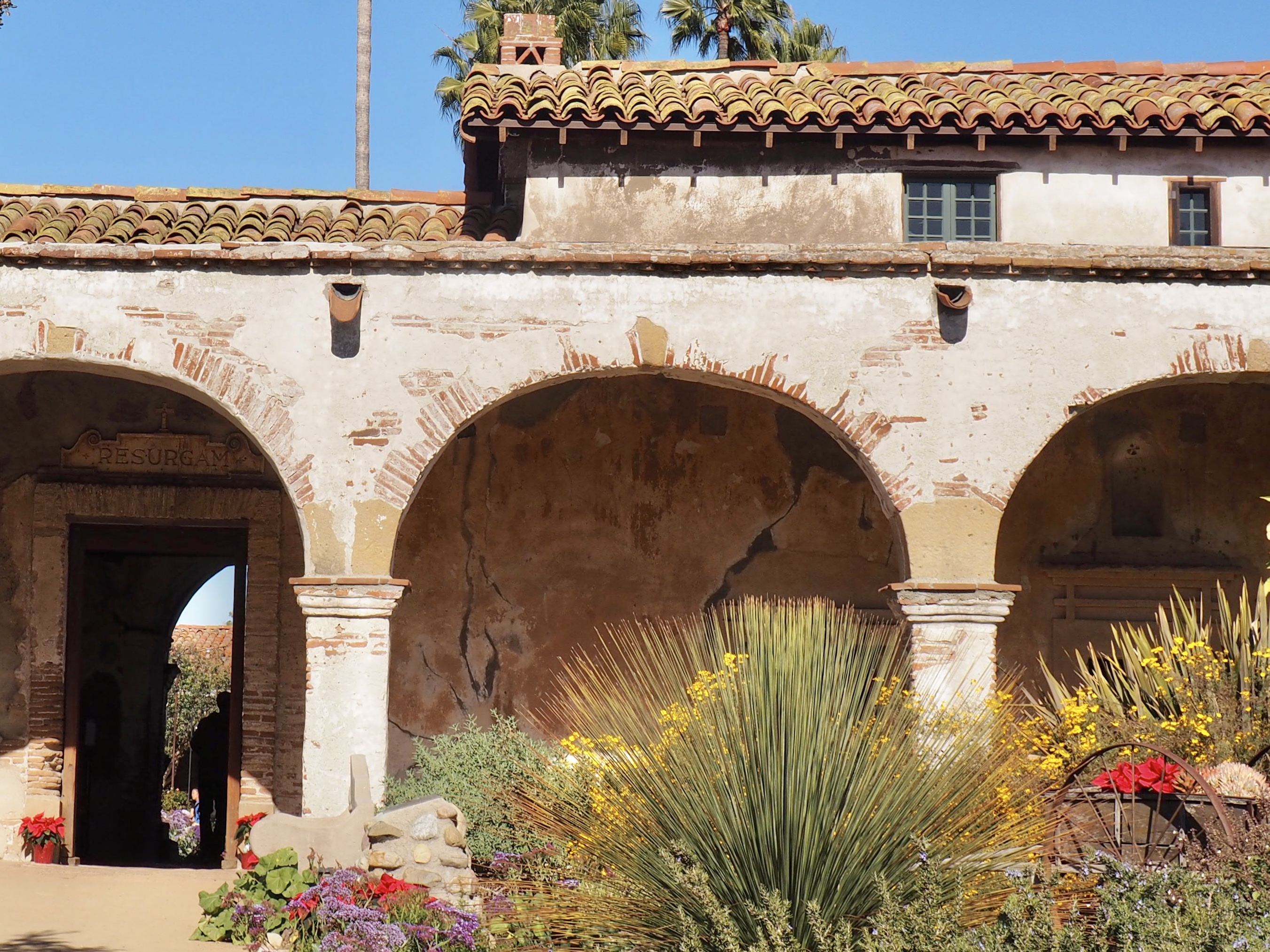
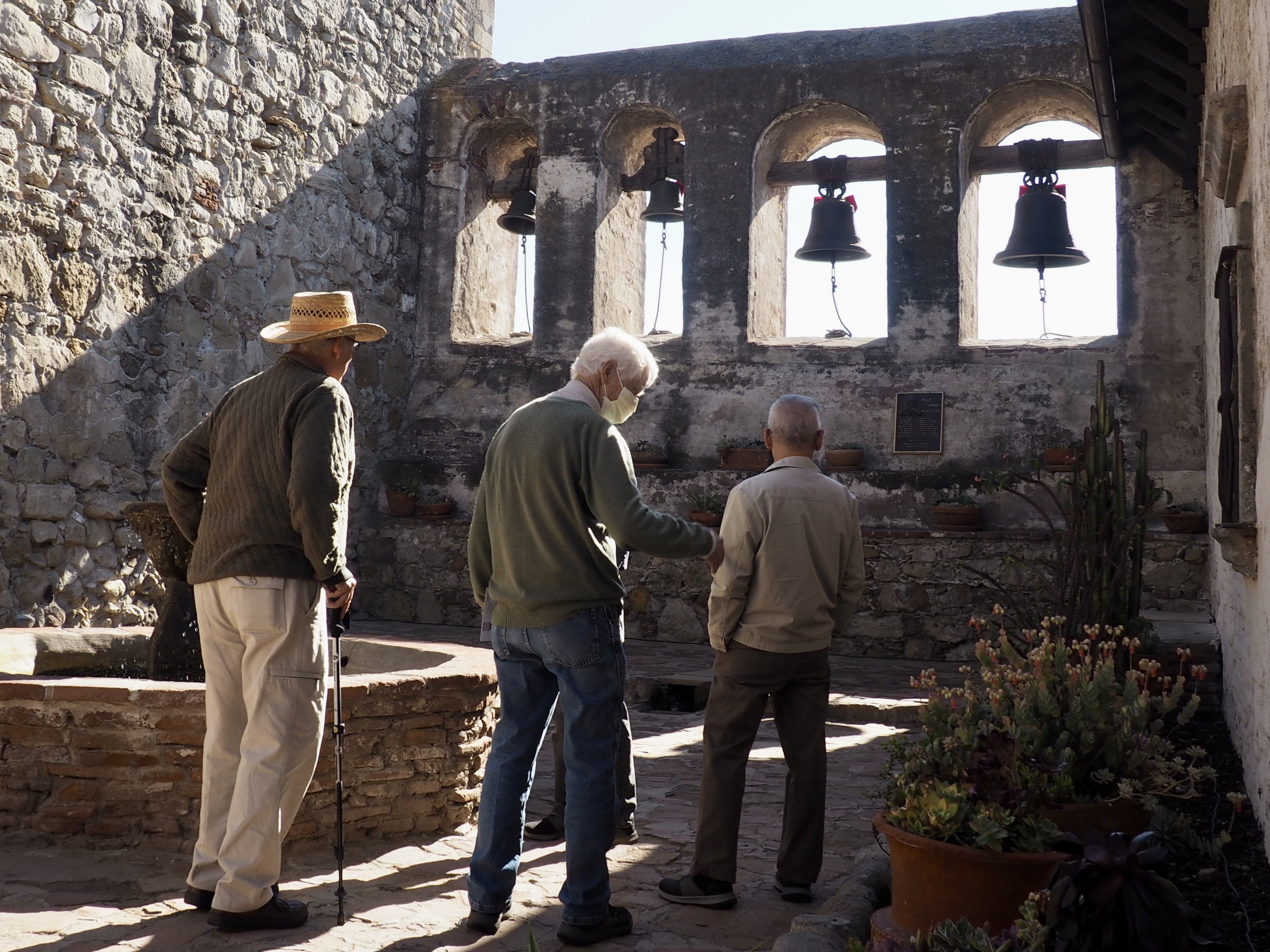
Alas, another Mission founded by the Spanish in their push north along the California coast in search of land and souls, this one founded in 1776 by the iconic Father Serra and the first foray into what is now Orange County. Although each is wholly unique and important, the stories are all much the same (see our visits to Missions in Baja California in our post of March 19, 2019). The Mission is within a short walk of a well-served train station, but Molvatu was also interested in a day trip from LA and shared our fascination with the ups and downs of history.
Los Angeles
Downtown

PacMutual Bldg. (Beaux-Arts) 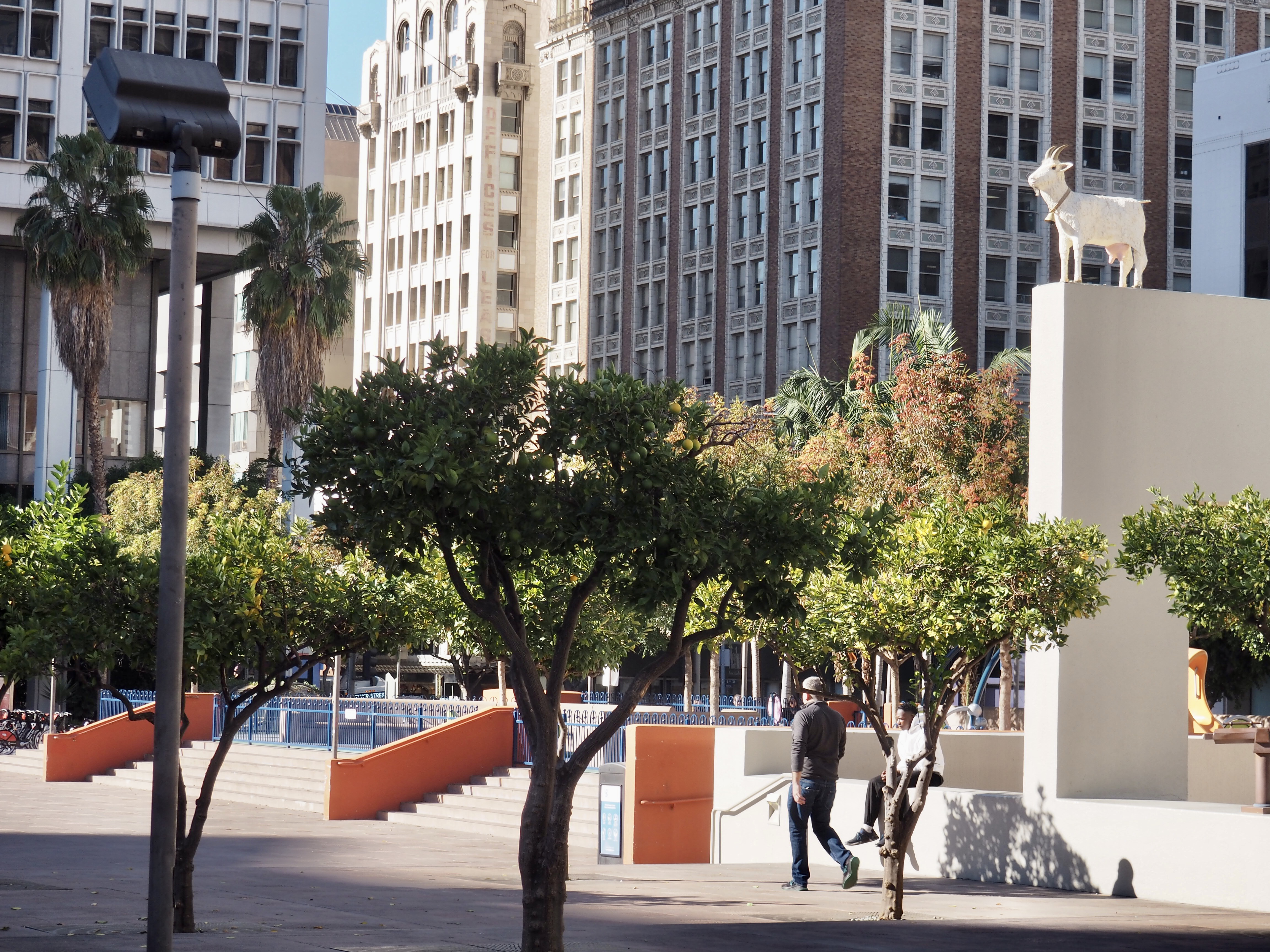
Pershing Square, complete with the pandemic goat 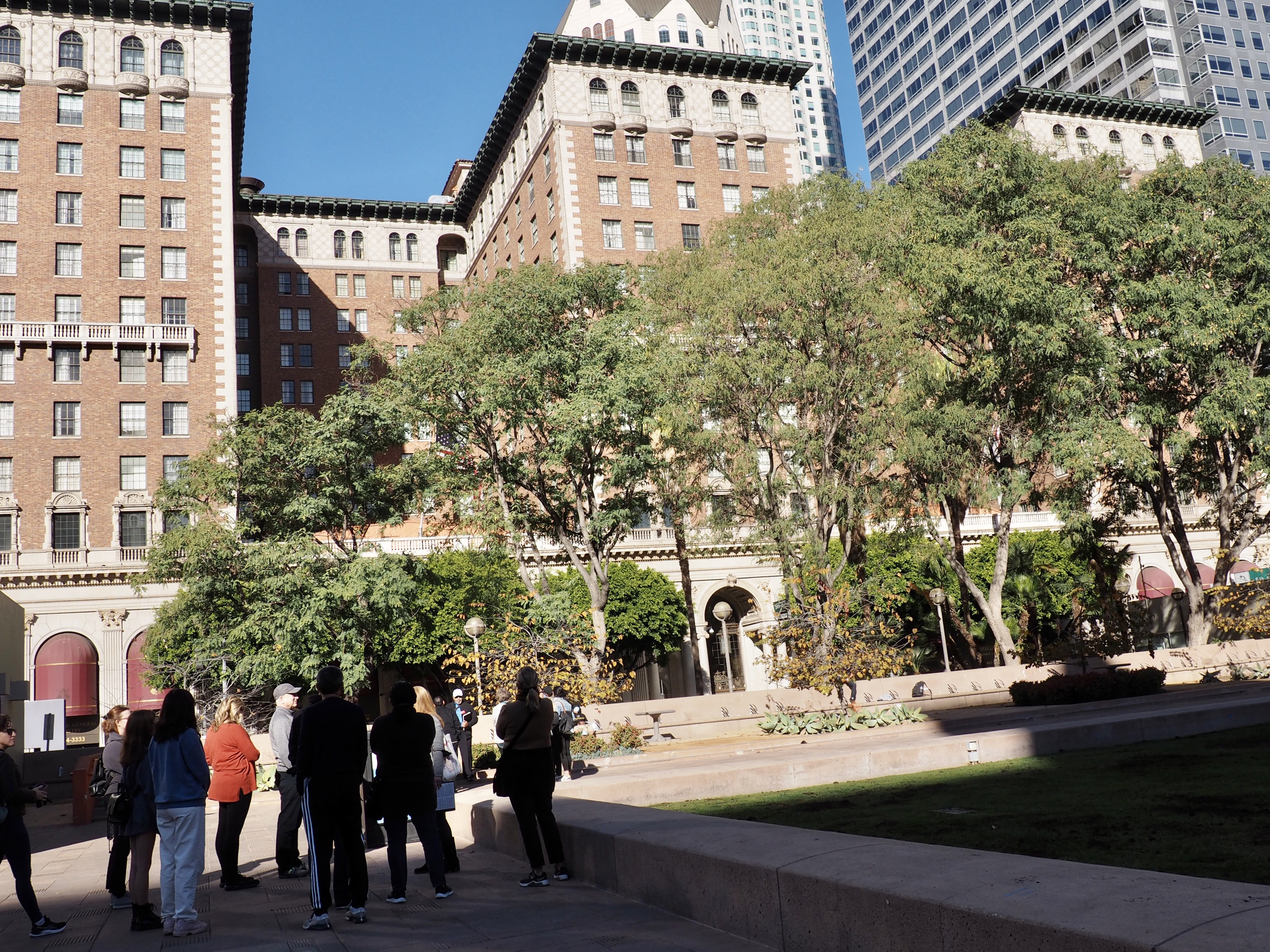
Biltmore Hotel (Beaux-Arts) 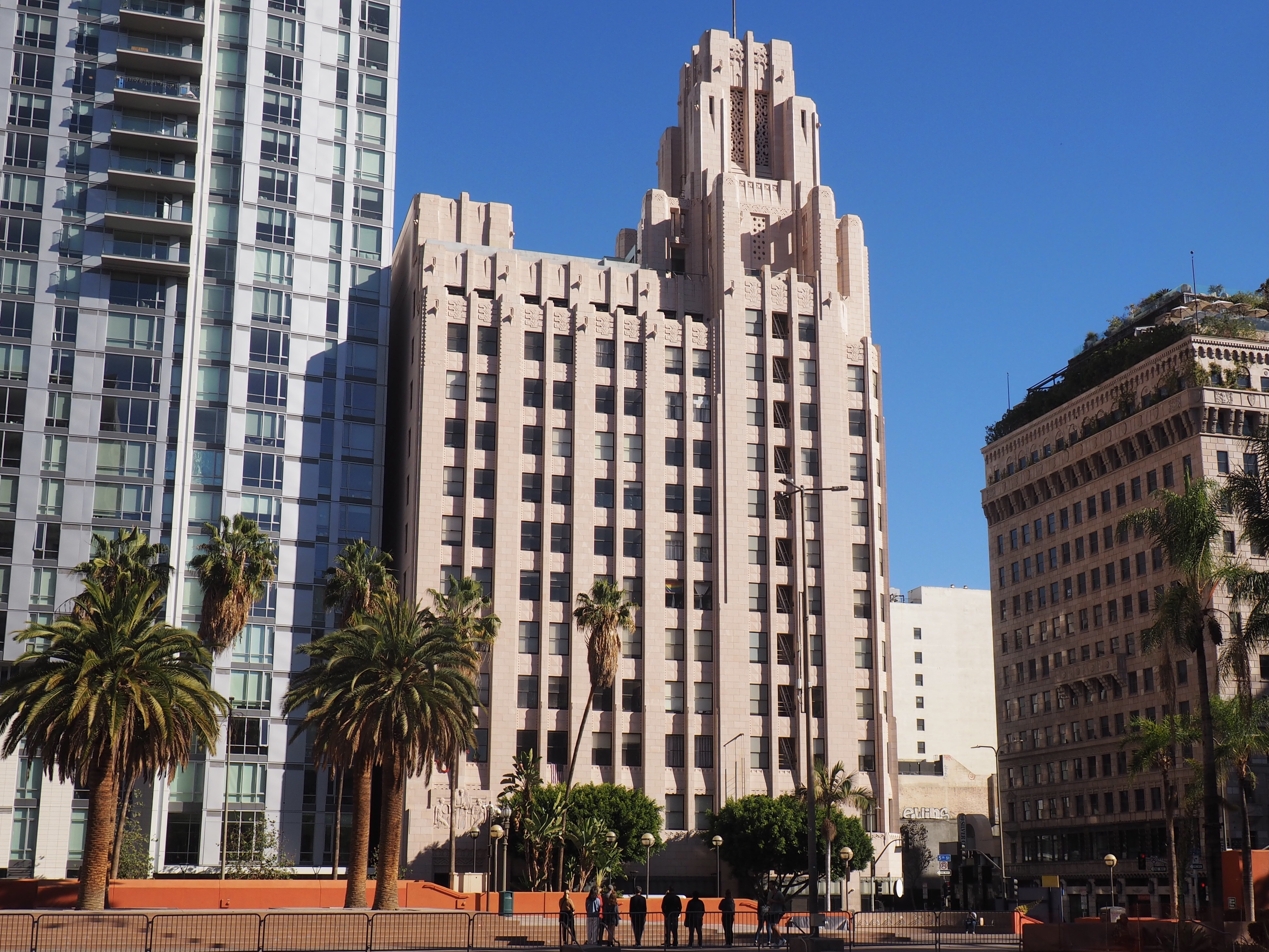
CalEdison Bldg. (Art Deco) 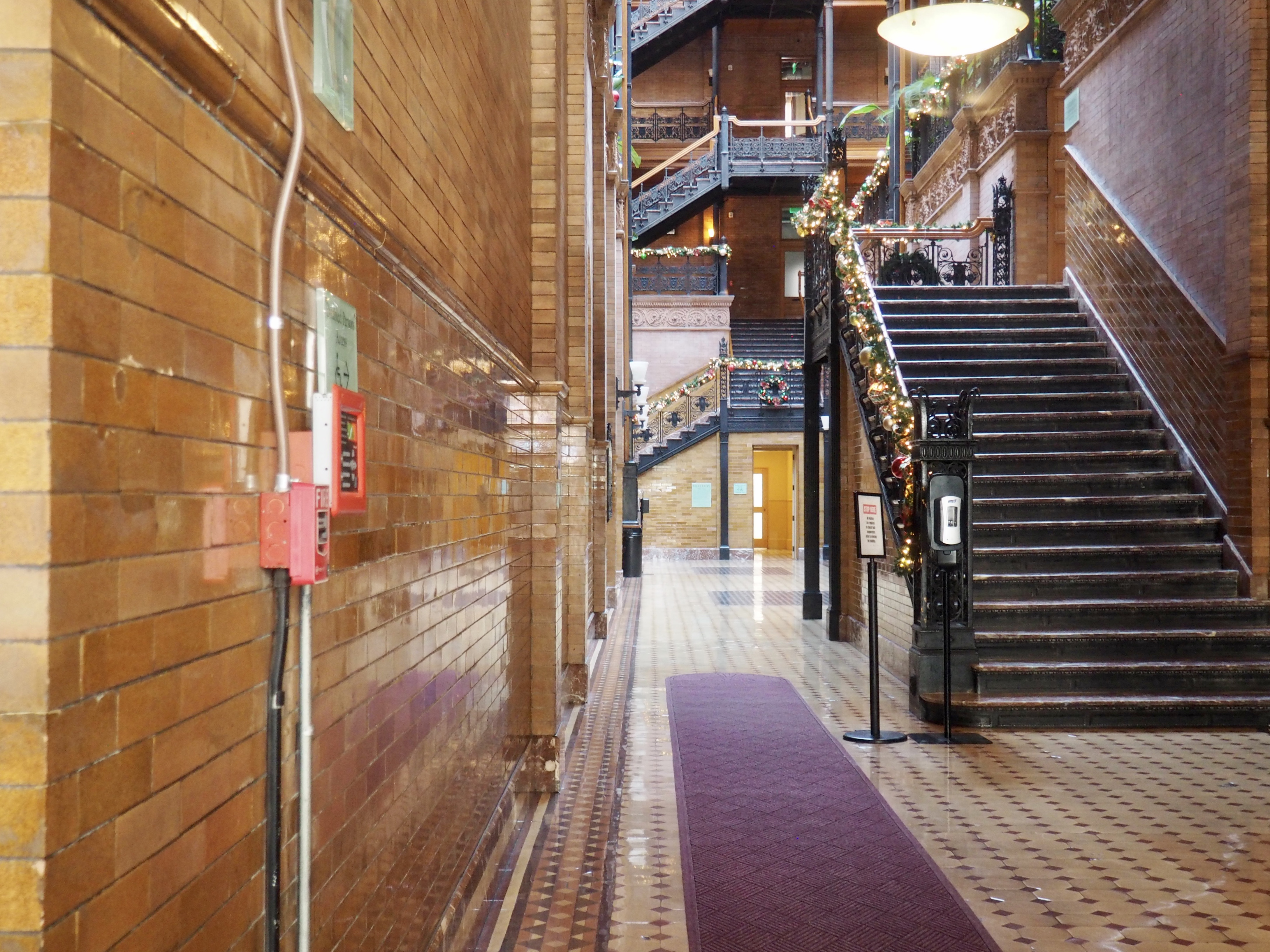
Bradbury Bldg. (w/Victorian ironwork) 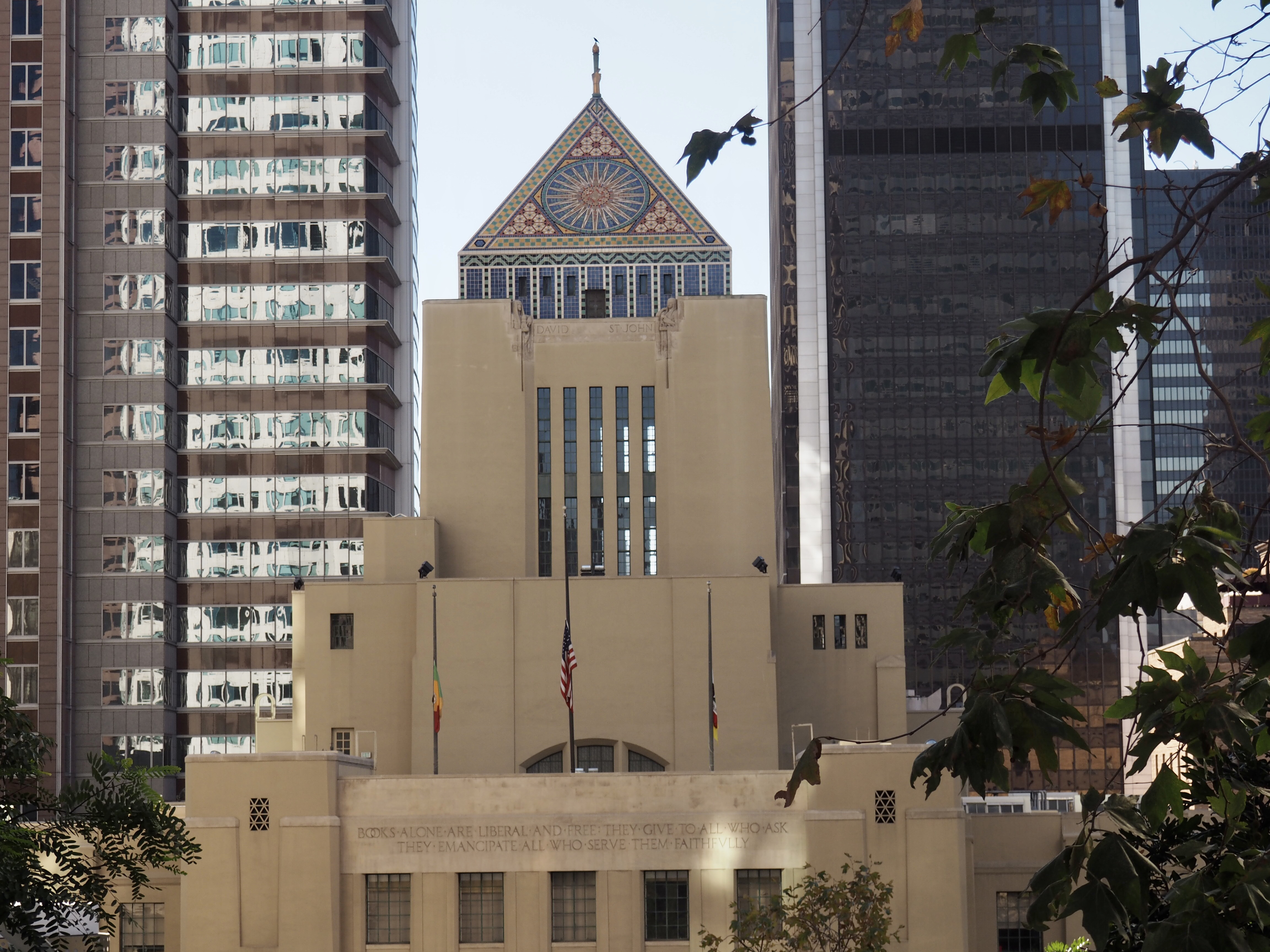
Central Library 
Library rotunda 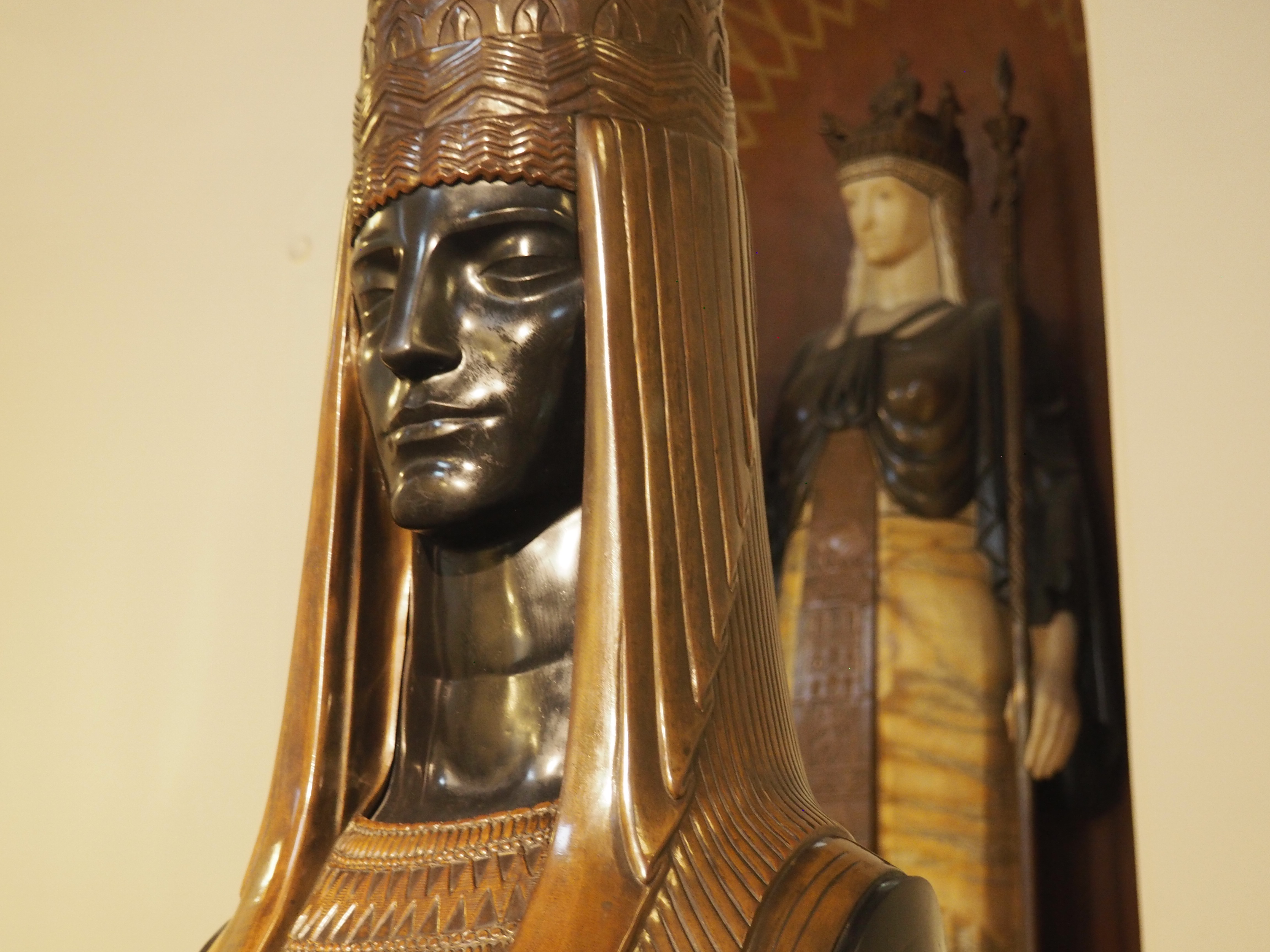
Library interior 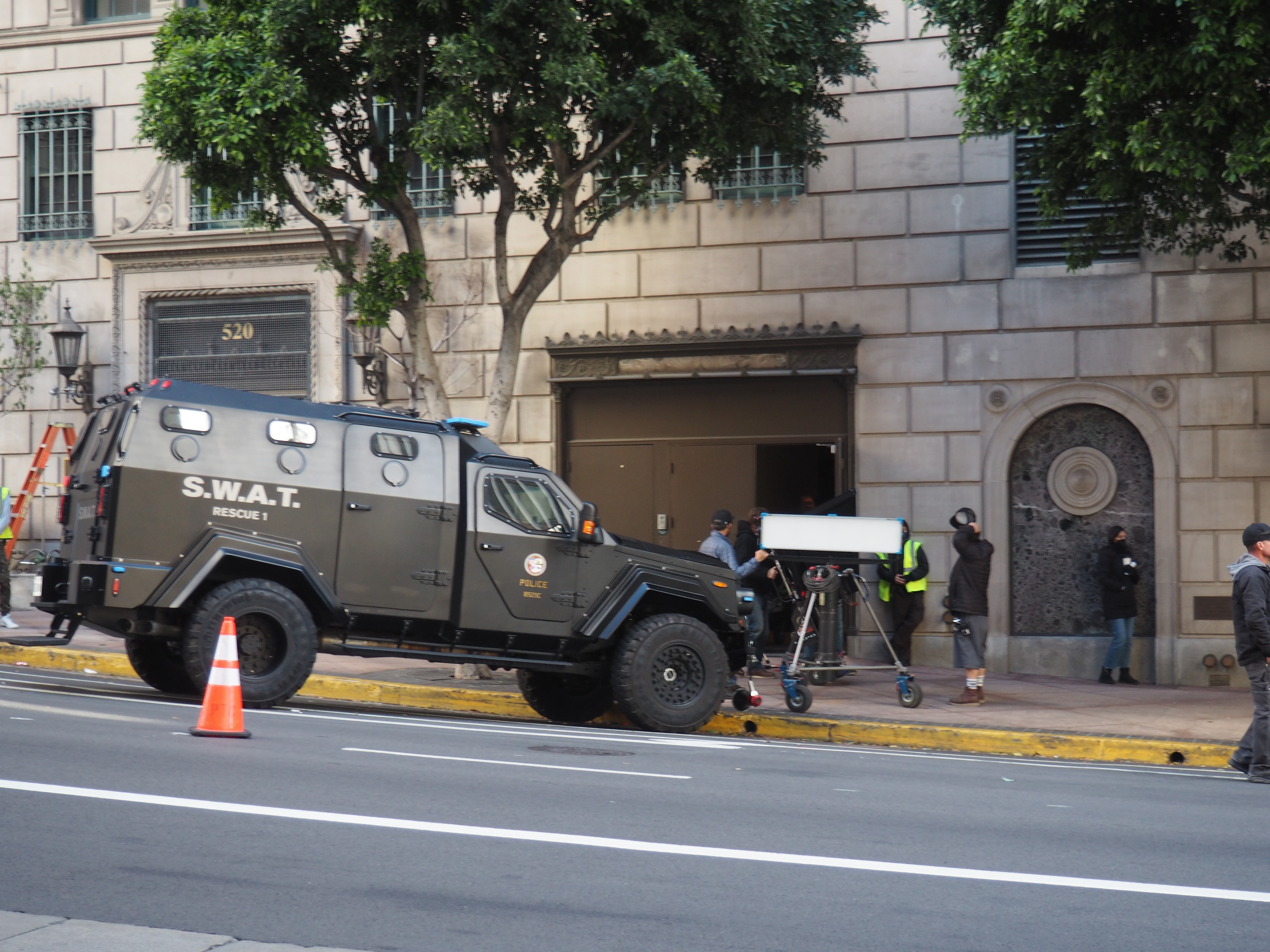
Someone’s shooting (a TV episode) 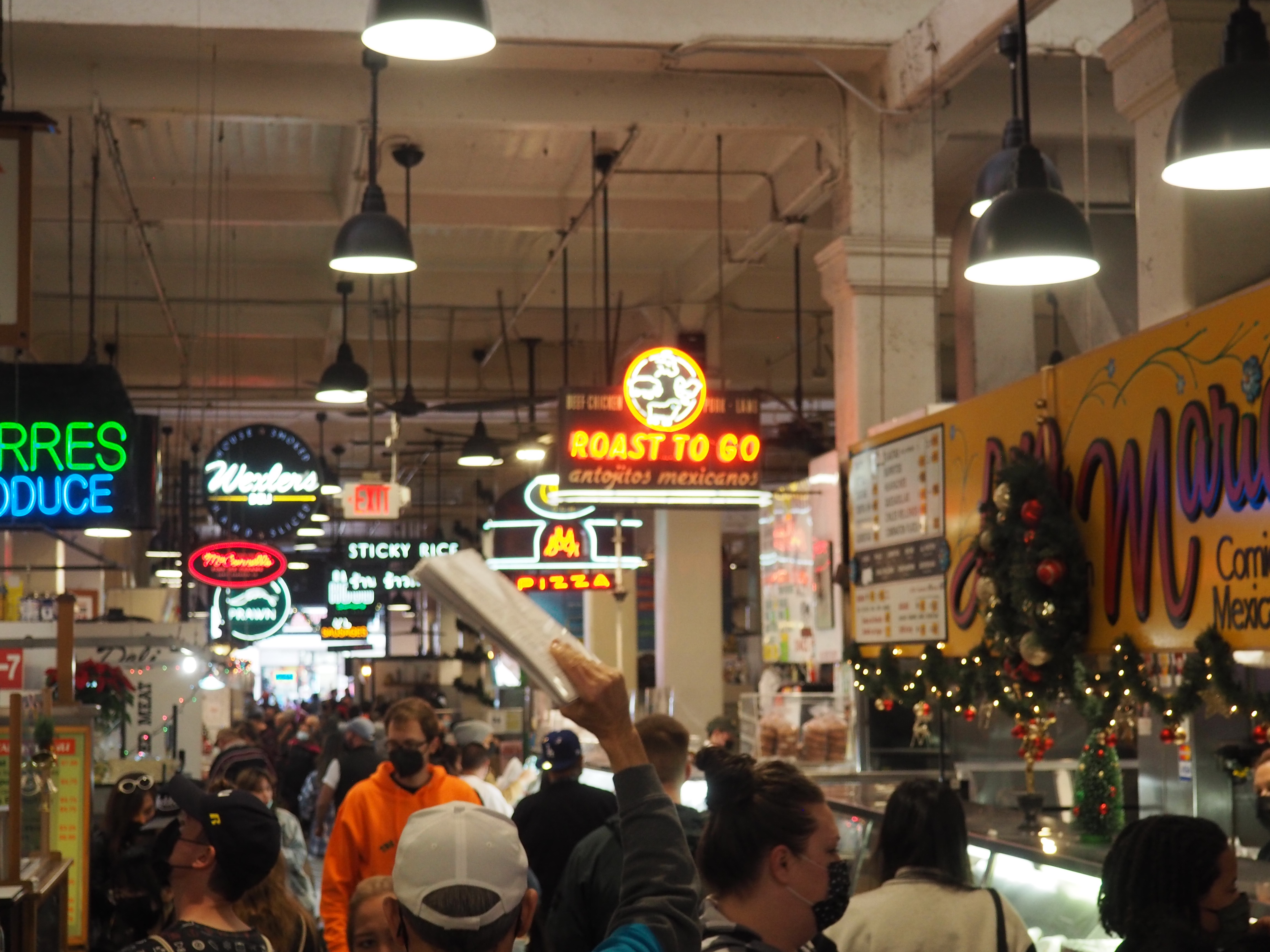
Grand Central Market 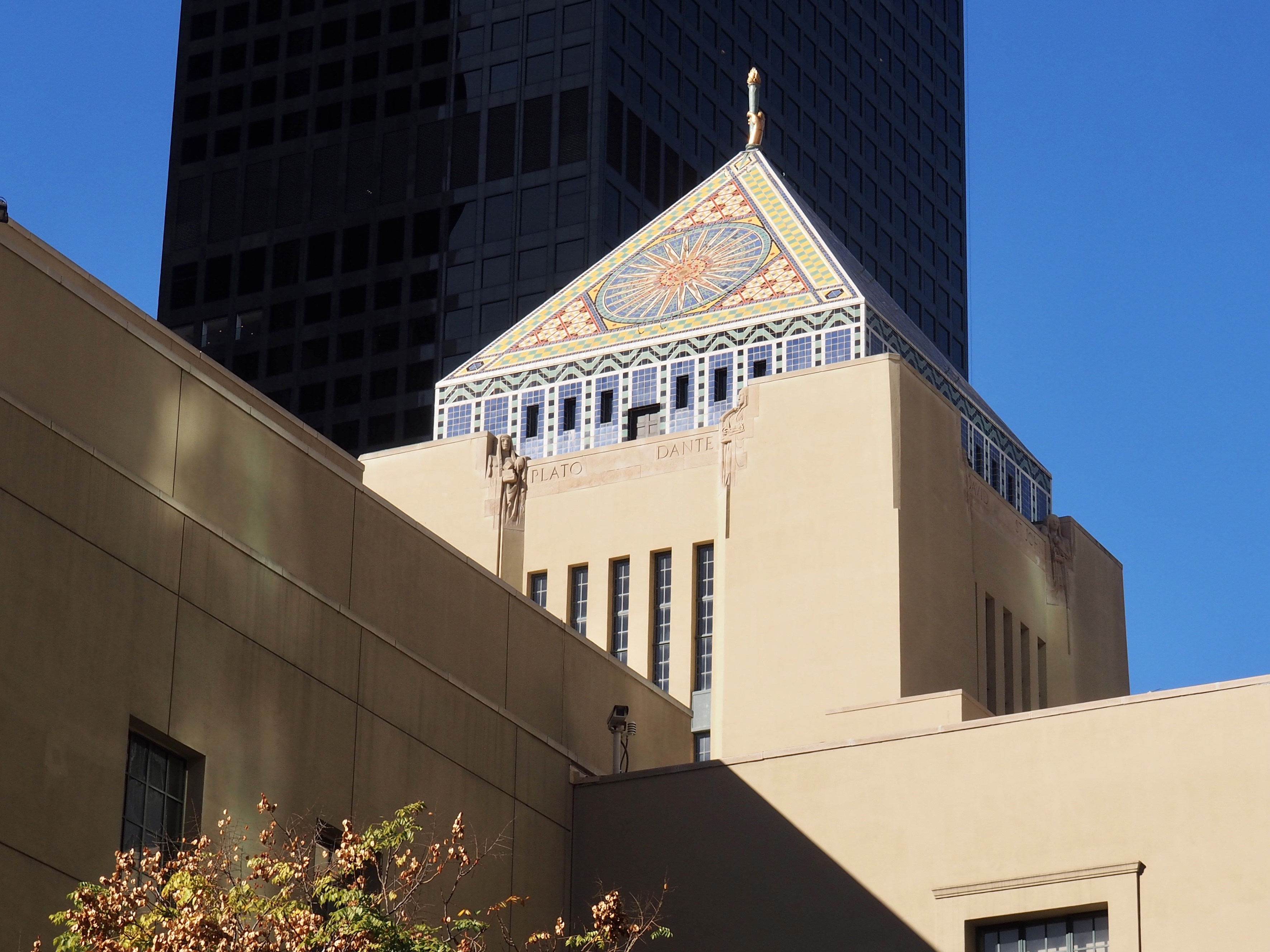
We joined an LA Conservancy walking tour of Downtown LA and received a thorough grounding in both the history of Los Angeles and the difference between the Beaux-Arts style of architecture and Art Deco, being struck by just how explosive the growth of the city actually was, with oil playing the early leading role. Simply put, LA is the quintessential 20th century city with all the pluses and minuses that brings with it.
Food, Glorious Food!
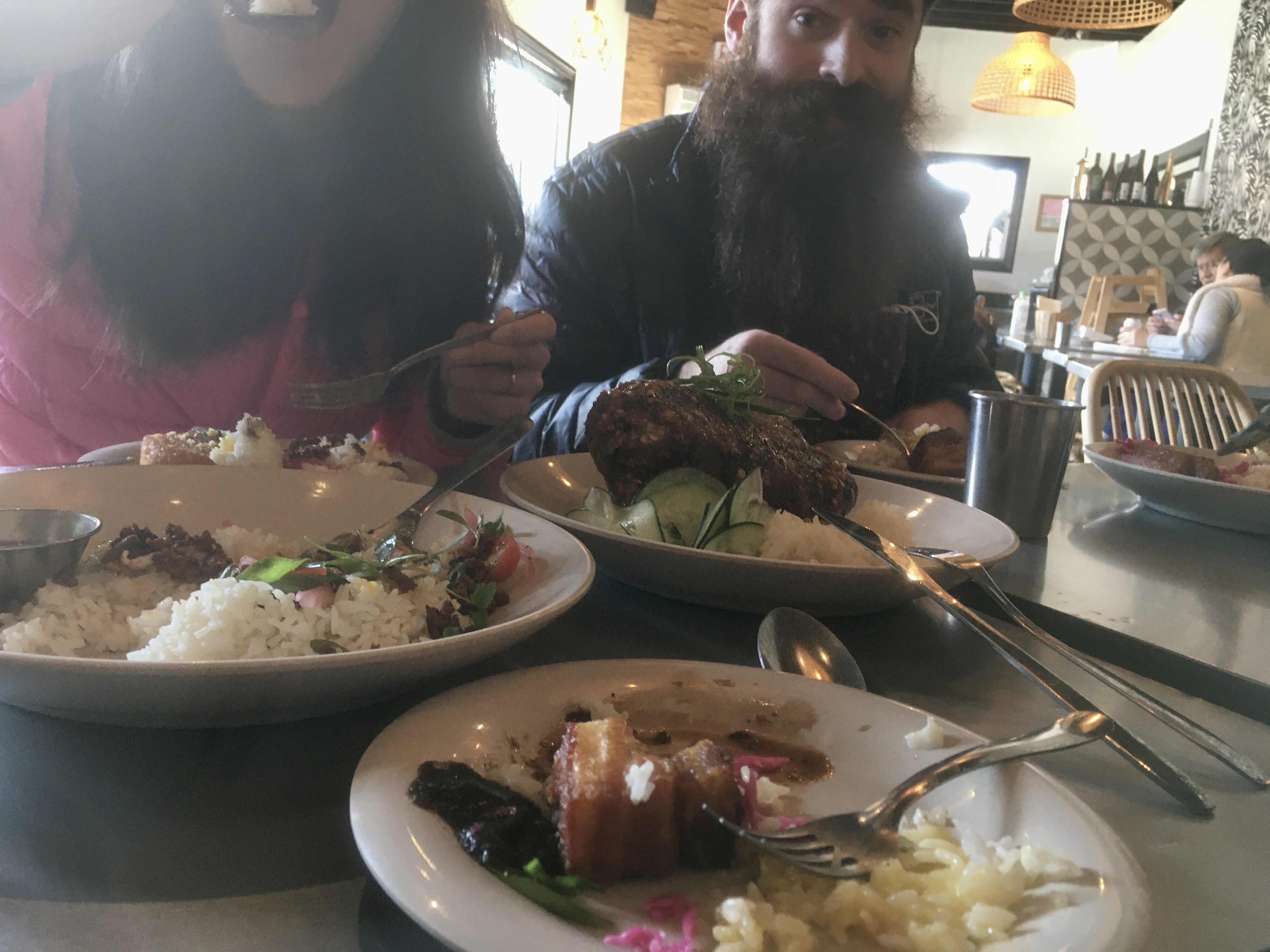
Filipino food @ Spoon & Pork in Echo Park
It’s also a city of countless neighborhoods, ethnic enclaves and interesting food. So, with Kyle and Molvatu, we enjoyed a different cuisine every day in Koreatown, Thaitown, Tehrangeles, and Mexican food everywhere. Our favorite was stopping by Tehrangeles and the restaurant Toranj where Fesenjoon (a stew of chicken boiled in a pomegranate and walnut sauce) was the star, followed by ice cream at Saffron & Rose (where the flavors are so exquisite we had to provide a link https://saffronrosepersianicecream.com/flavors/) in Westwood.
Museums (Free!)

According to our friend Philip-the-Woodworker, the French were “wonderful craftsmen, but did not know when to stop.”
With any spare time in LA, you really need to book a visit time (needed during the pandemic) at one of the Getty museums. We chose the Getty Center and were blown away by how money and opulence oozed over everything, the setting, the access via a tram system, the sheer numbers of employees, and the collection on display (of course), all shared with you and me solely to avoid liability for criminal tax fraud. (So, maybe that’s good?)
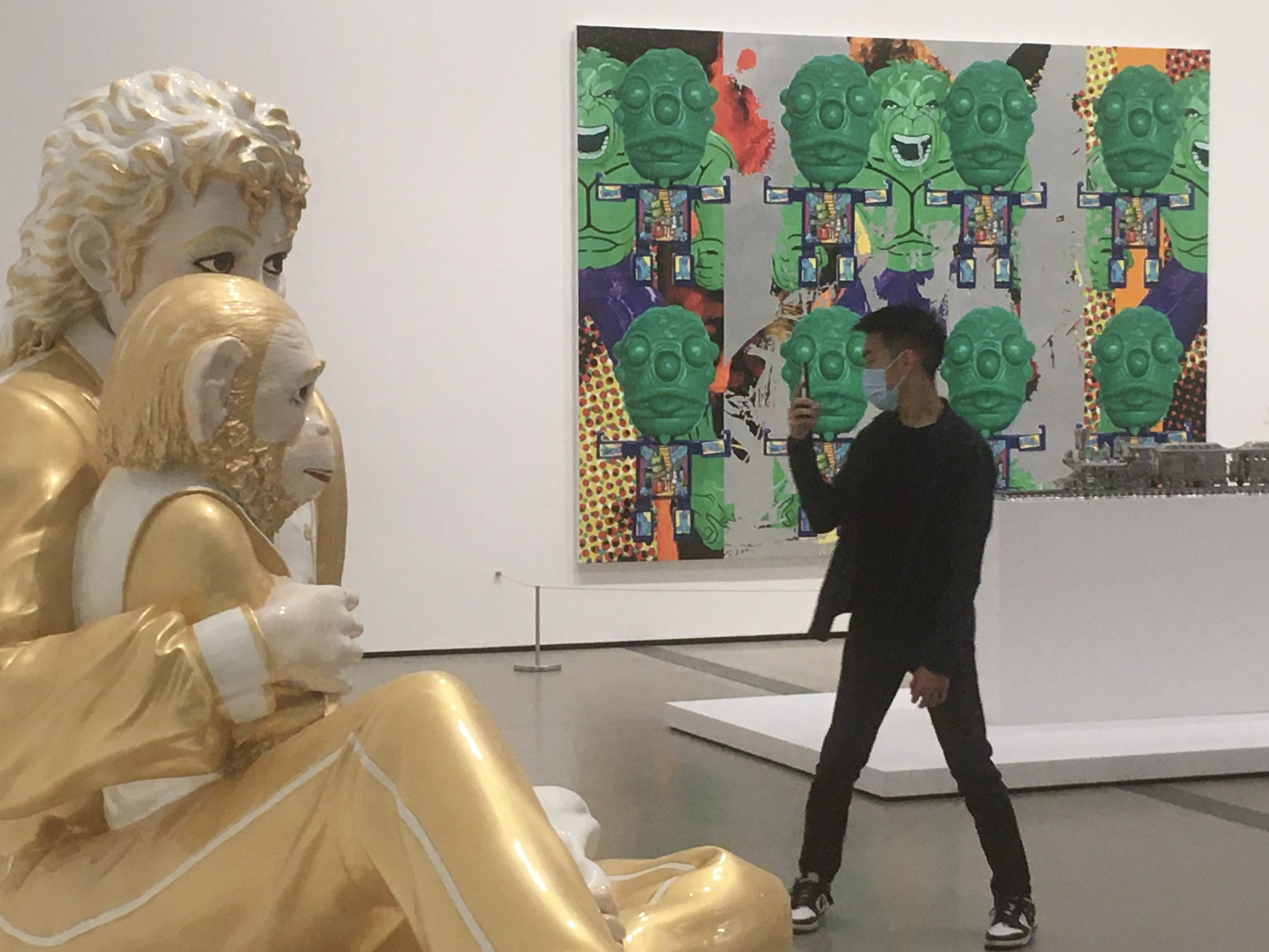
Jeff Koons: ‘Michael Jackson and Bubbles’ (left) and ‘Triple Hulk and Elvis II’ 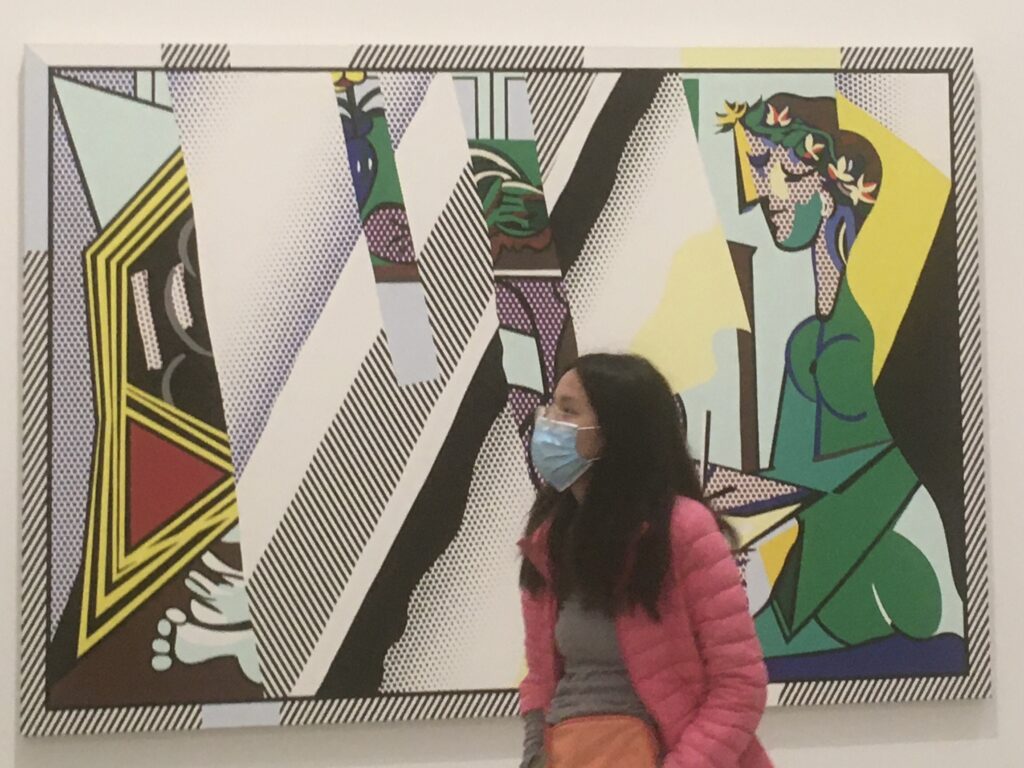
Roy Lichtenstein: ‘Reflections on “Interior with Girl Drawing”’ 
As part of its mission, the collection of The Broad is continually lent out and the storage space is central to the building’s architecture. 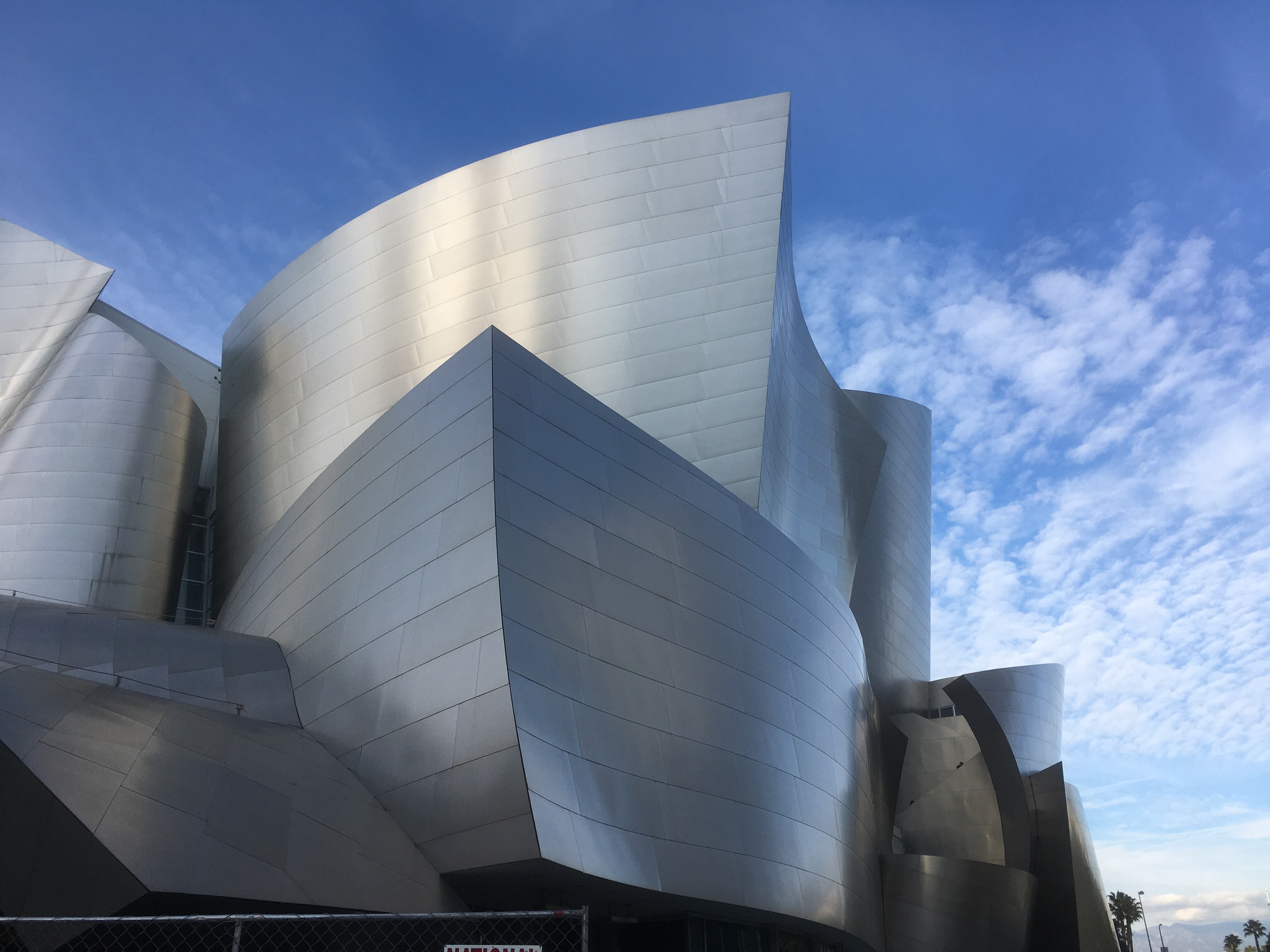
Obligatory photo of the Disney Concert Hall, next door the The Broad.
The other exceptional free art museum in Los Angeles is The Broad (with a long “O,” named for its founders, Eli and Edythe Broad). Their entire focus was contemporary art and started when they traded a perfectly nice piece by Vincent Van Gogh (too 19th century, perhaps) for what we felt was a mediocre (at best) piece by Robert Rauschenberg, but we certainly wouldn’t want to question the judgment of such genuinely generous people. The Broad is definitely worth a visit. Many artists in their main gallery space are represented by a lot of paintings, giving you a much better sense of them. Jim was enthralled by multiple large rooms filled with paintings by Roy Lichtenstein (just makes you feel good, folks). We even grudgingly reevaluated our dislike of Jeff Koons and his balloon sculptures when we were treated to a large room filled with his pre-balloon work (we still don’t like the big tulips and all those balloon pieces, by the way).
LACMA
Not free, but easily worth the price of admission is the excellent Los Angeles County Museum of Art (known locally as LACMA) where we caught up with the touring Obama Portraits. The exhibit was nicely paired with an exhibit primarily from LACMA’s permanent collection of Black American Portraits from around 1800 to the present, including more portraits by Sherald and Wiley that helped to put the Obama Portraits in context.
Meanwhile, Out in Azusal
To explore yet another art form, we ventured out towards San Gabriel Canyon to Azusa and signed up as agents of The Ministry of Peculiarities to investigate the persistence of spirits in the ancestral Hope home plagued by untimely (and, need we say, frequently suspicious if not violent) deaths. This was an unusually well done escape room with 4 rooms, 2 actors, and an interesting and complex plot complete with an “unreliable narrator” character interacting most frequently with us and voice recordings of other characters played as clues for us, cued by what we were doing or saying. Very impressive and a lot of fun. It really did make you appreciate the escape room as art form. More immersive than a video game, more puzzling than (most) theater.
Finally
Anywhere you visit, it’s always impossible to do or see everything worth seeing or doing and often it’s the unexpected detour you take that ends up being the most memorable. Of course, Dodger Stadium is none of that. But, rolling down the window to snap this picture in line for a Covid test seemed a nice summary of what being on the road is all about, especially in such a constrained time. We take our pleasure in odd moments like this.


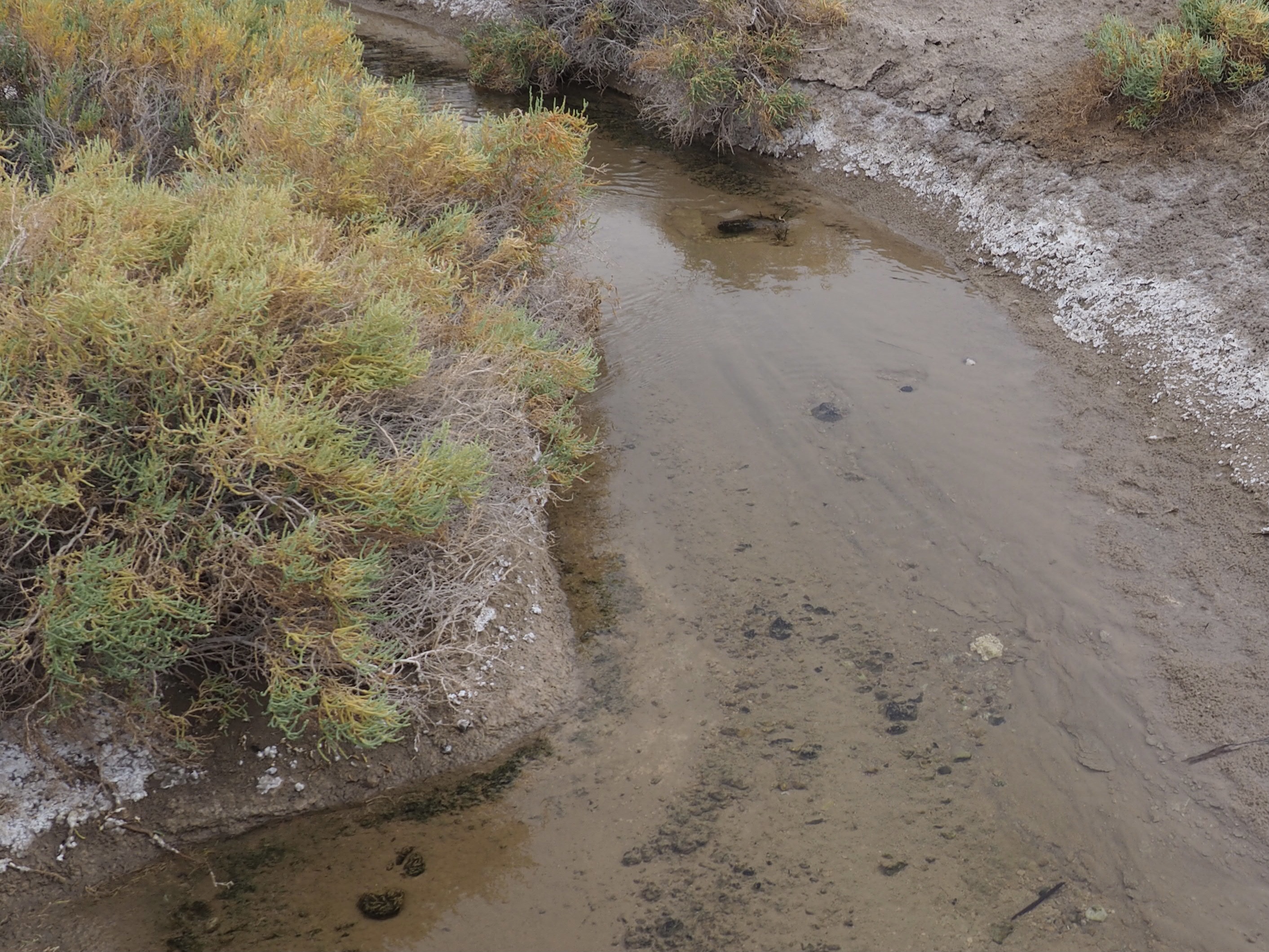

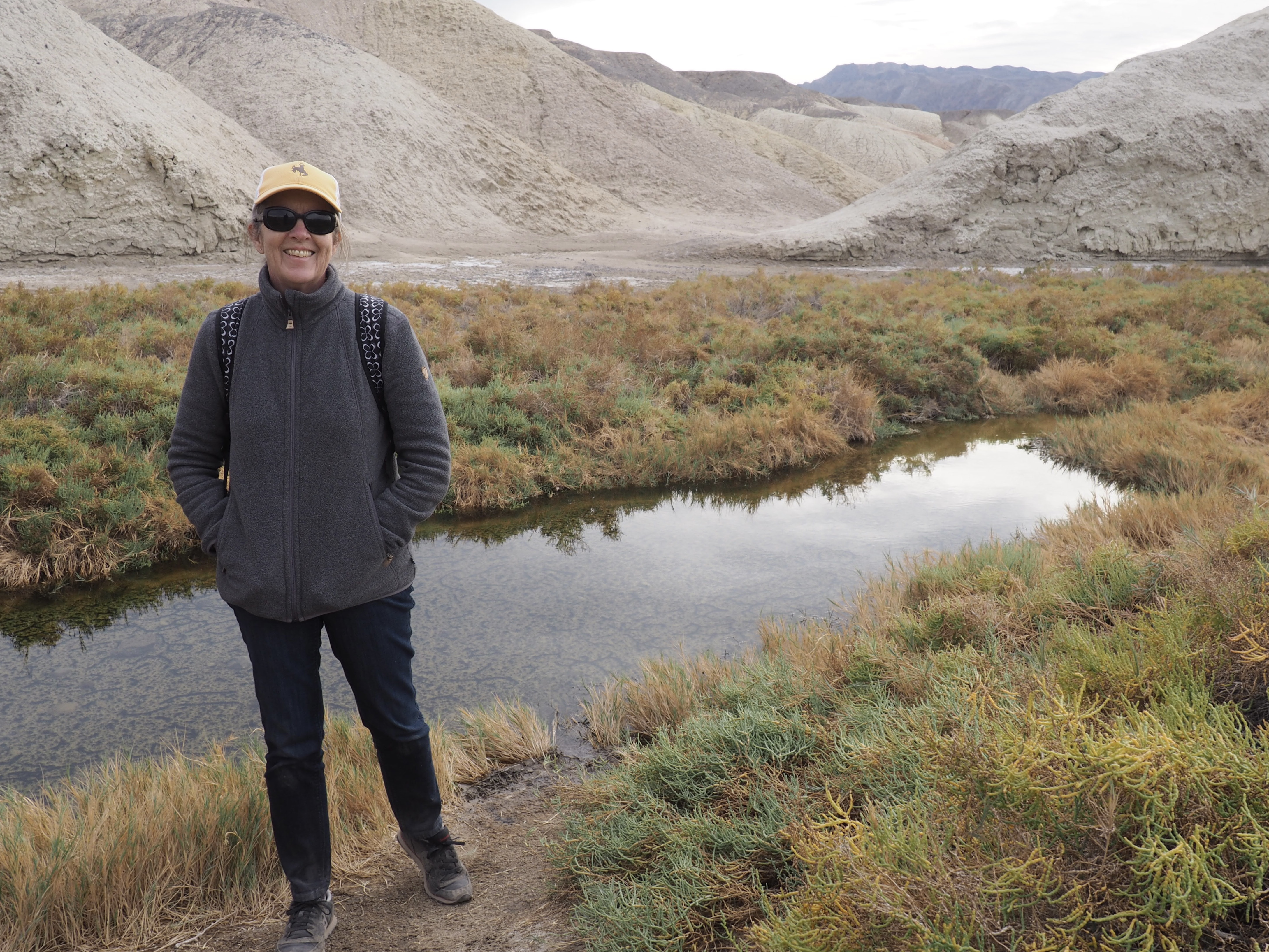
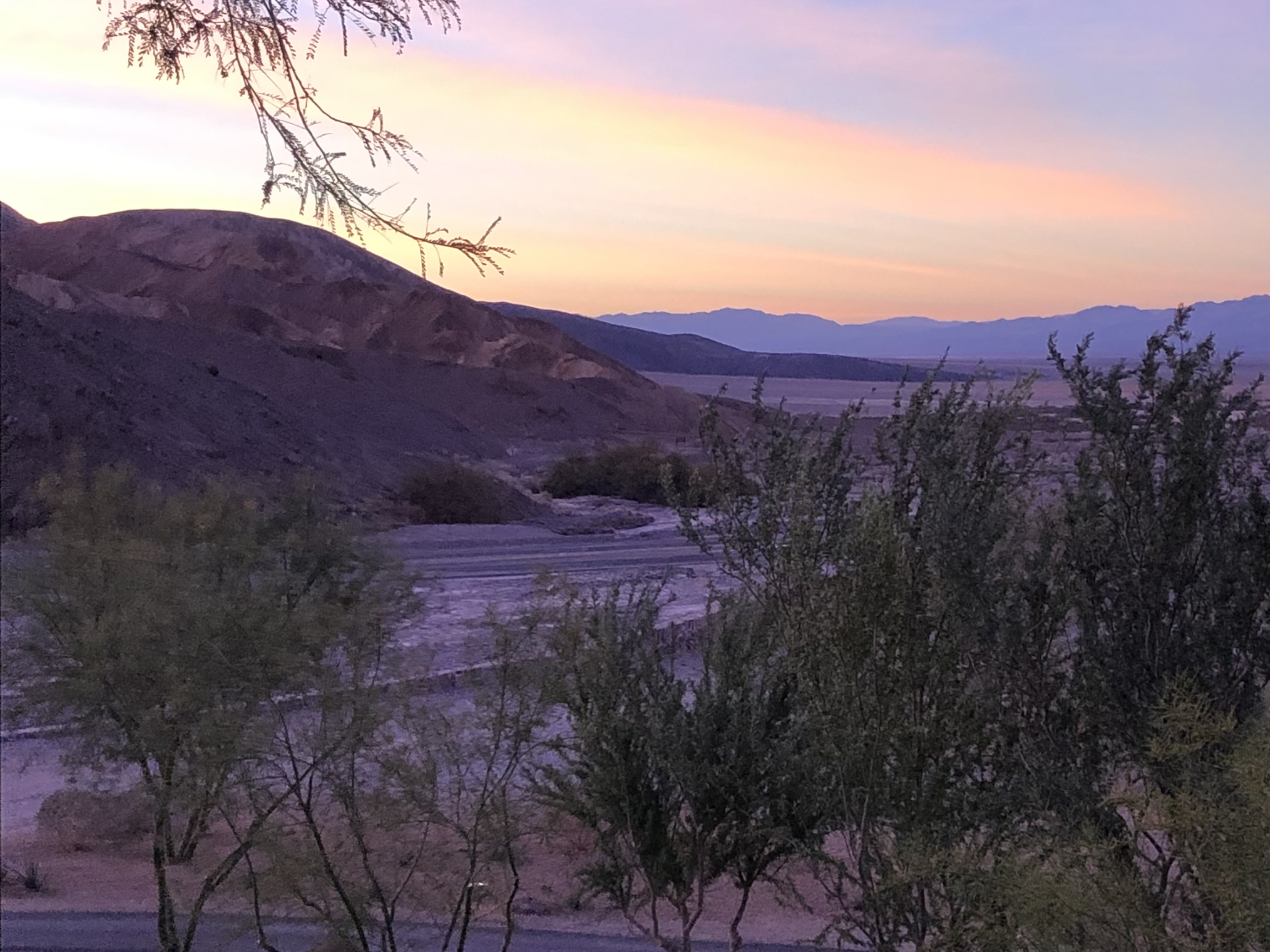

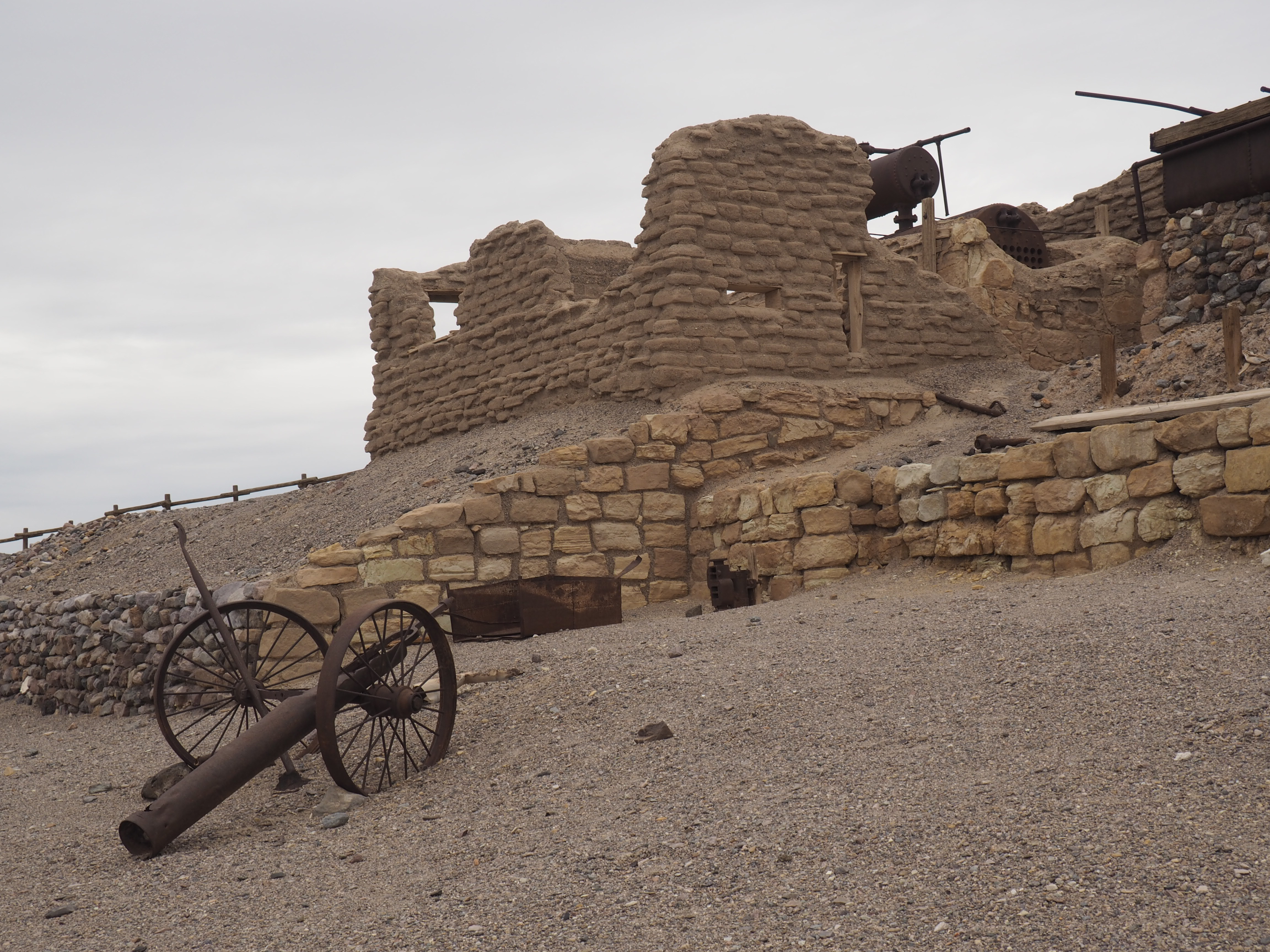
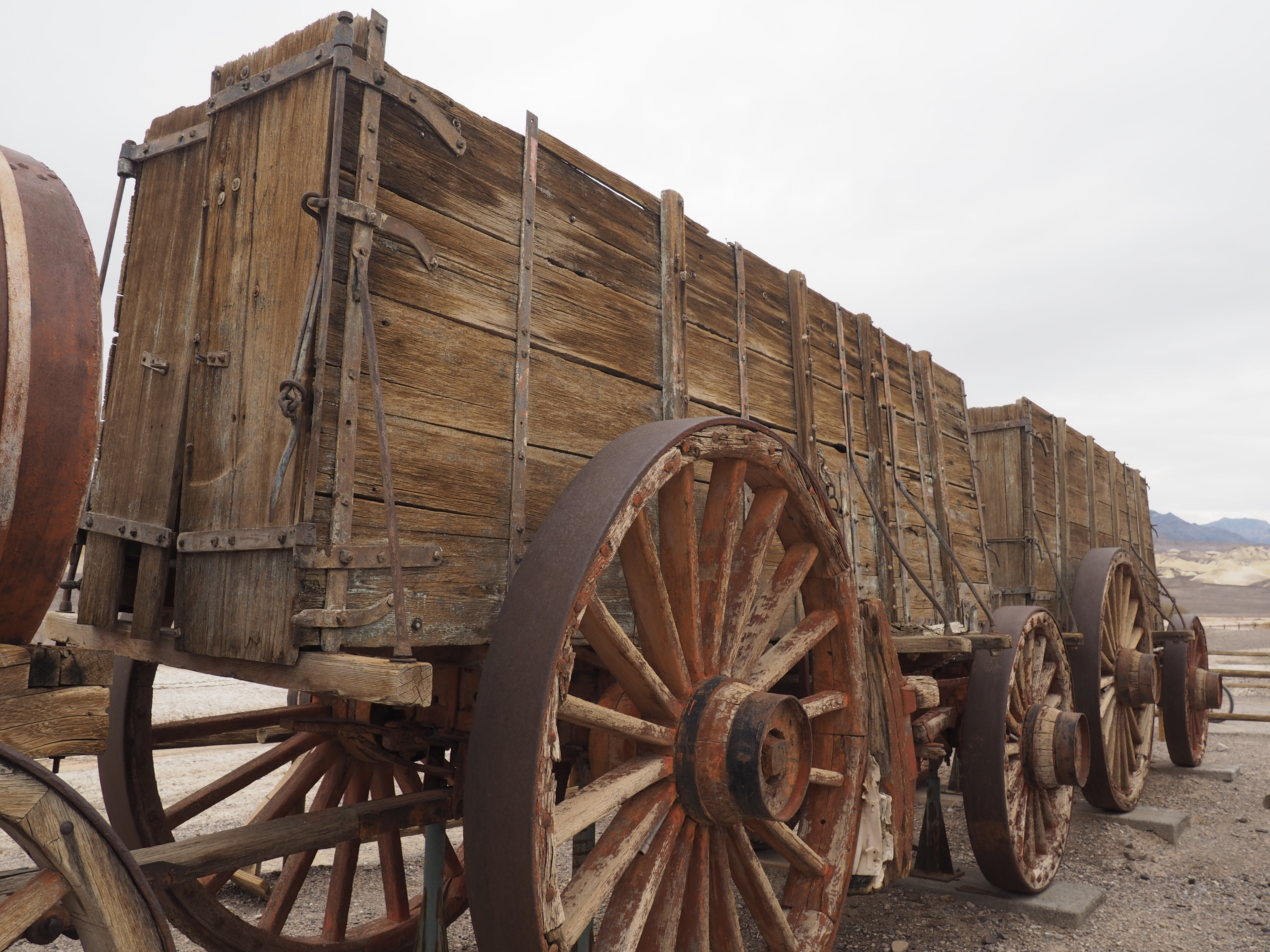

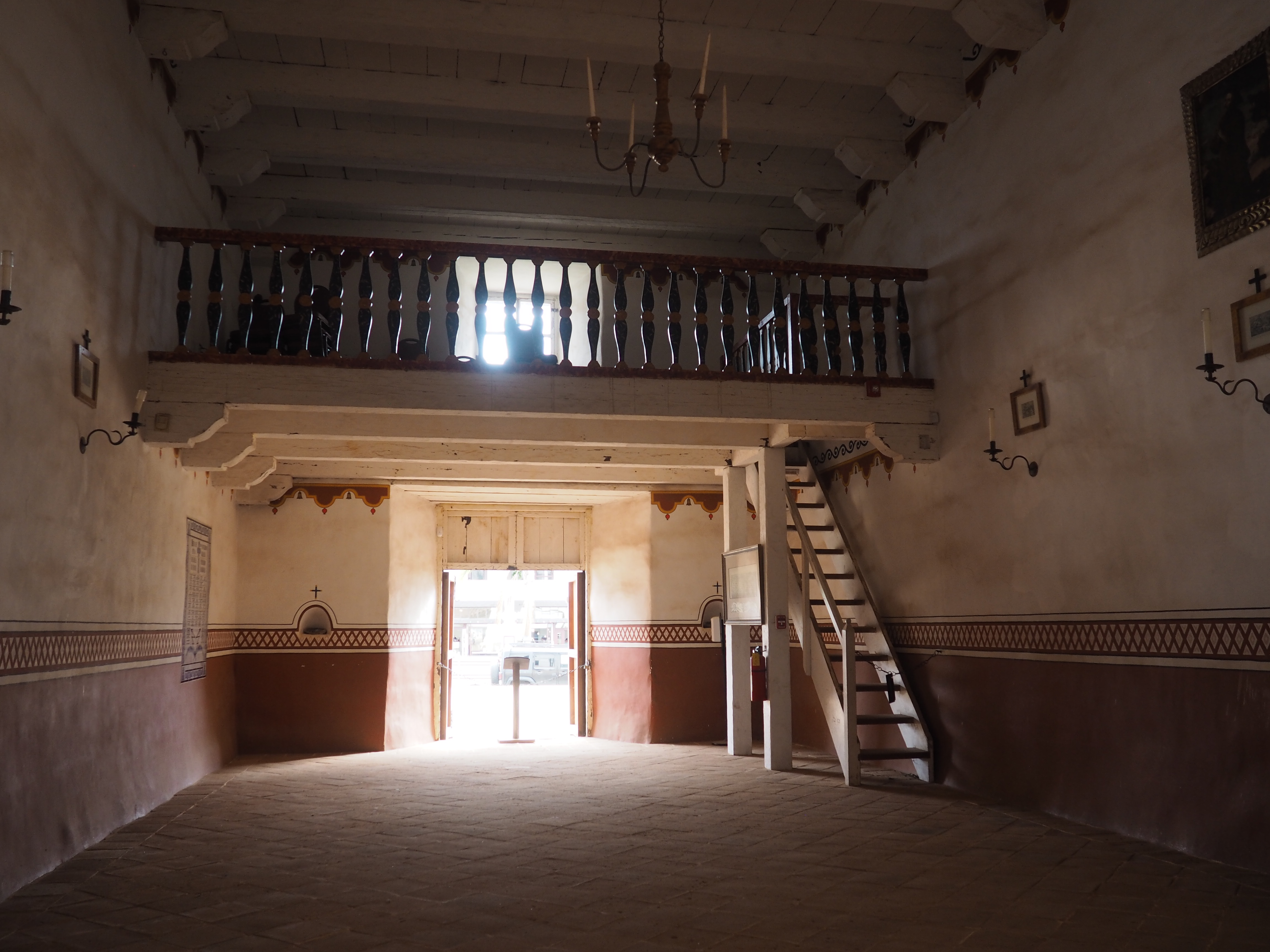
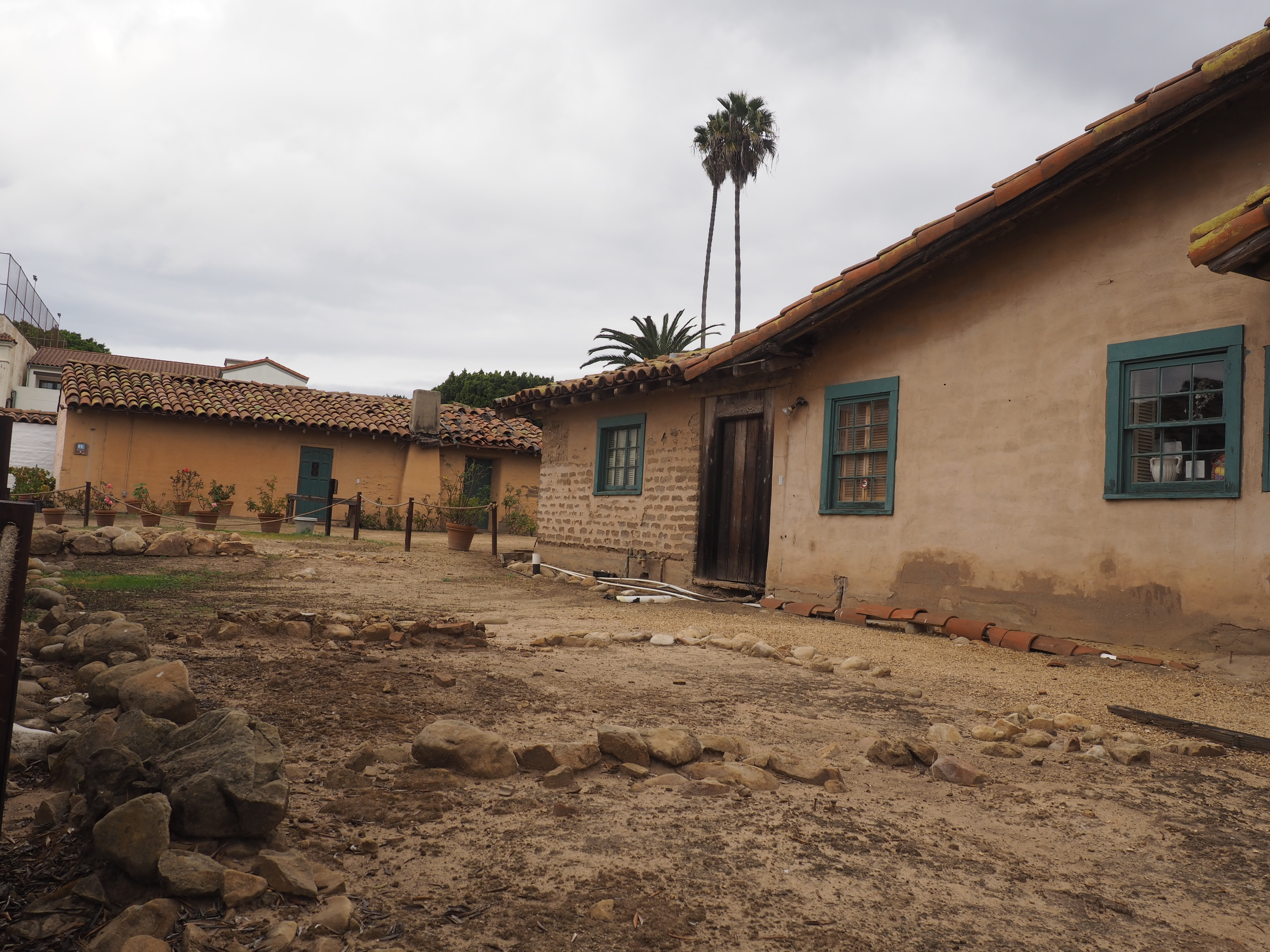

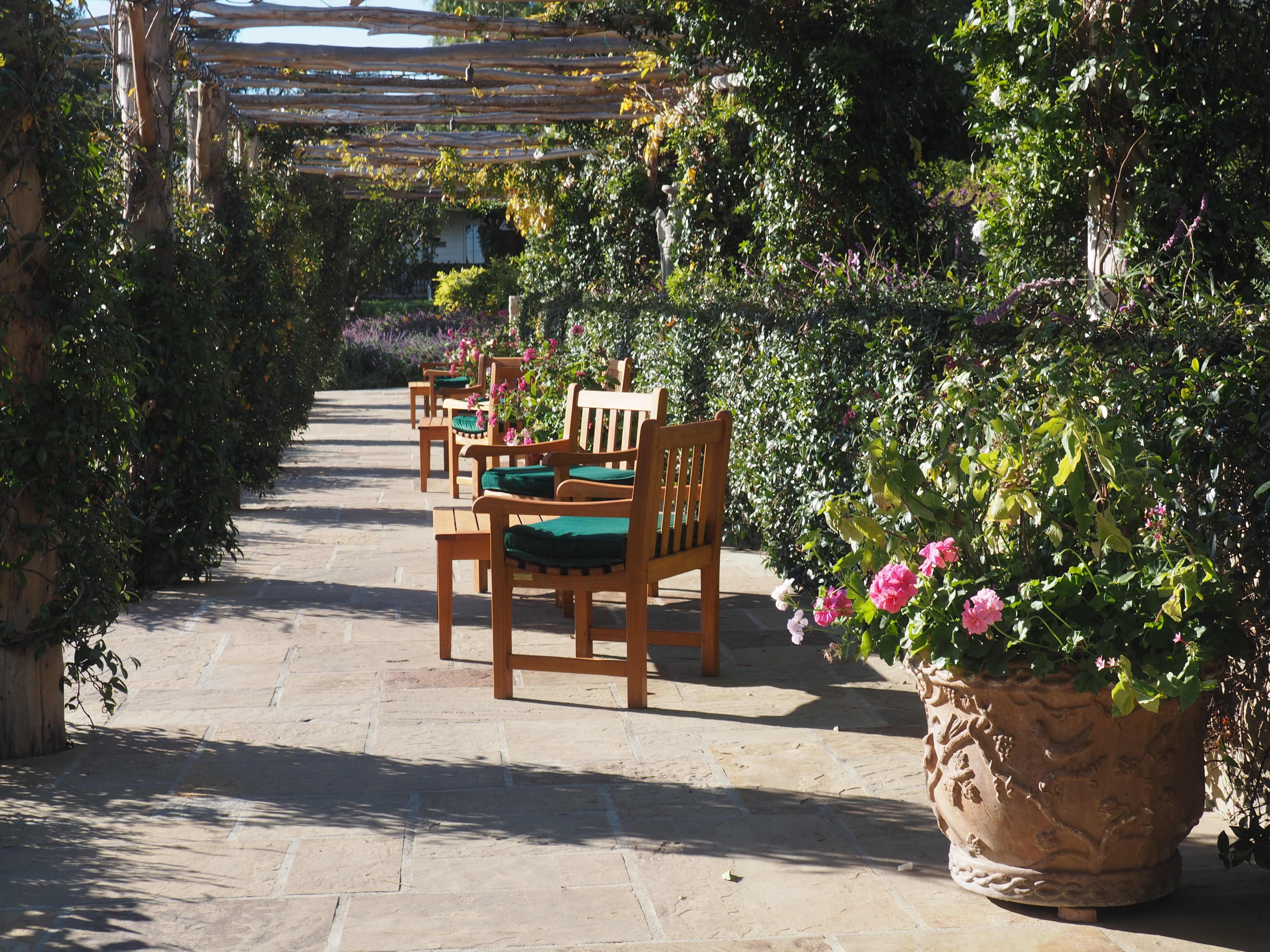
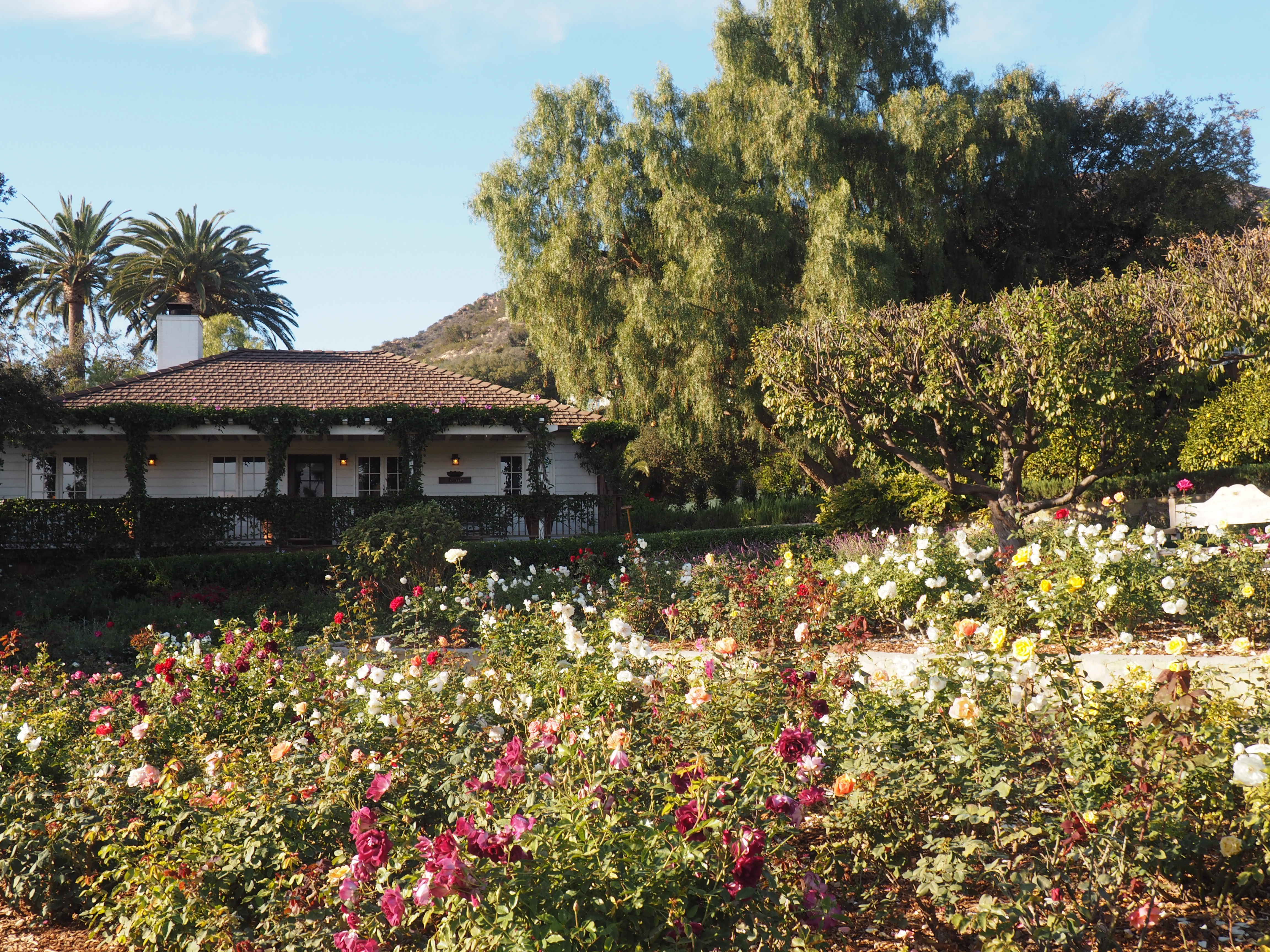
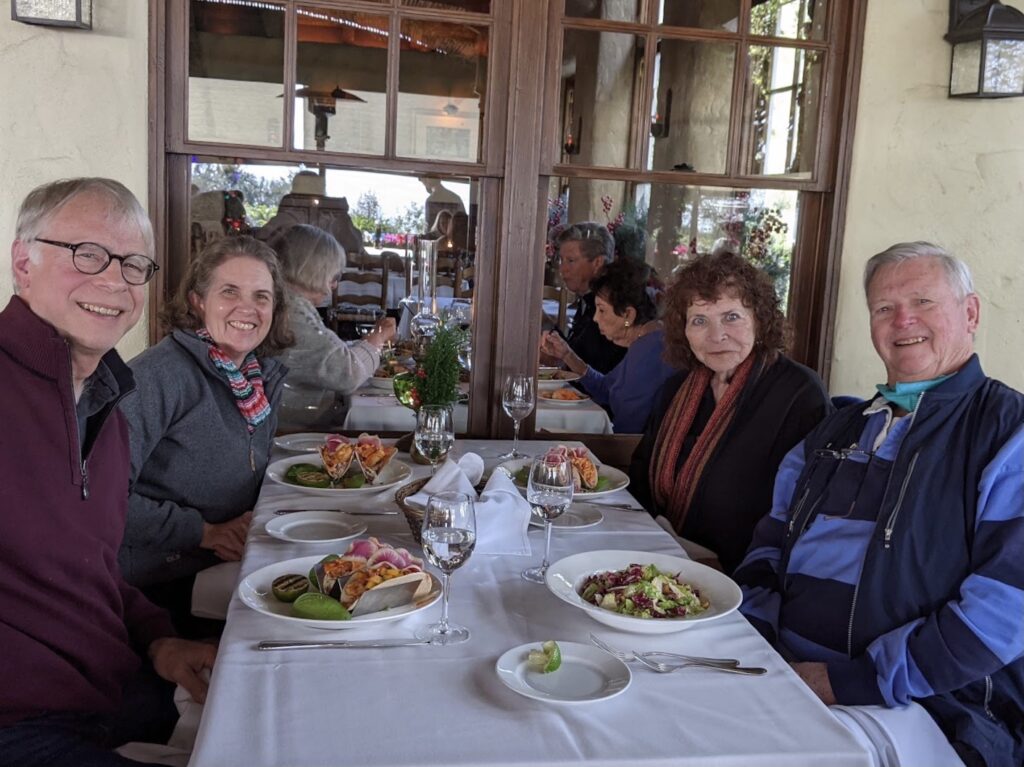
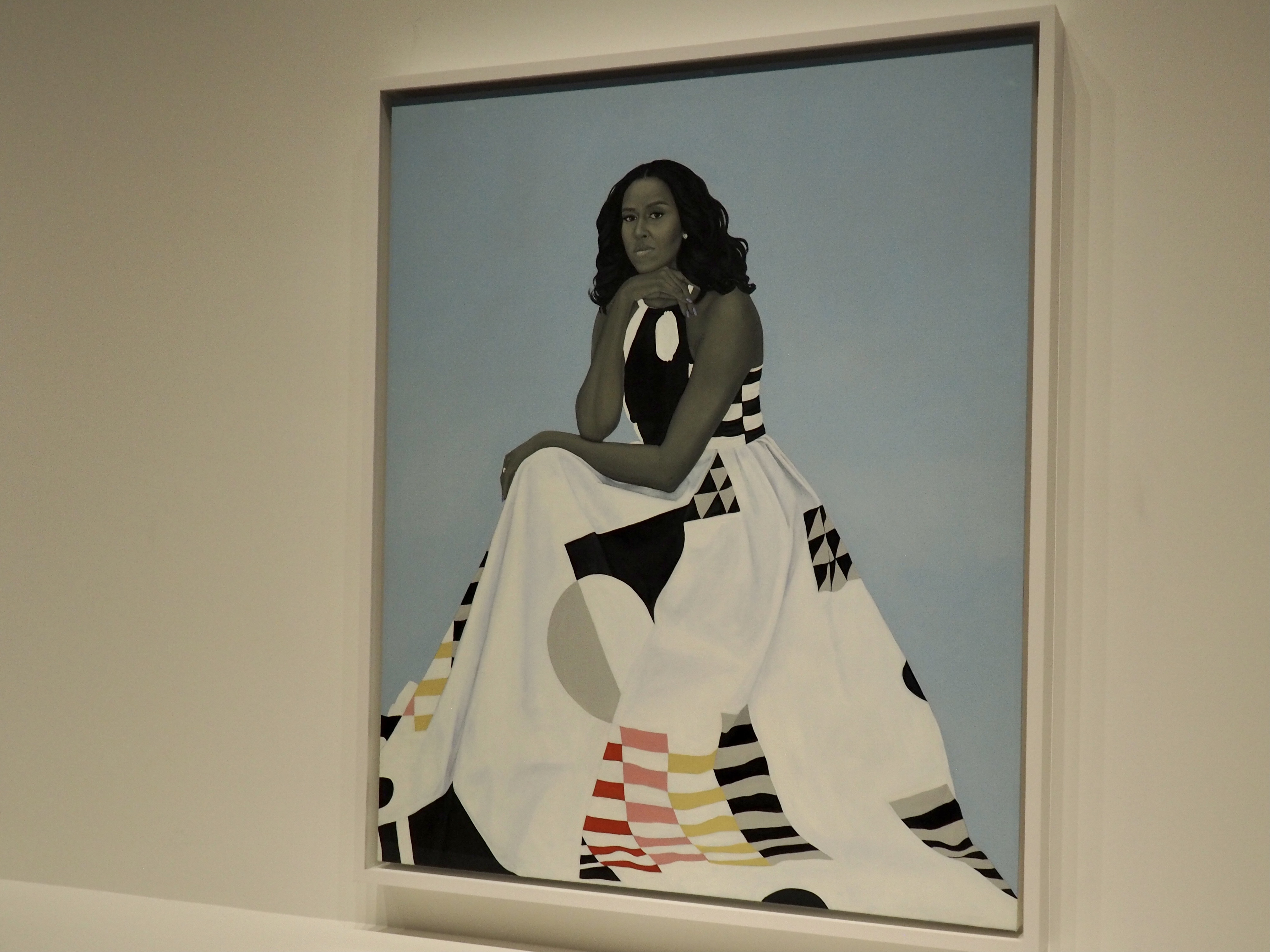
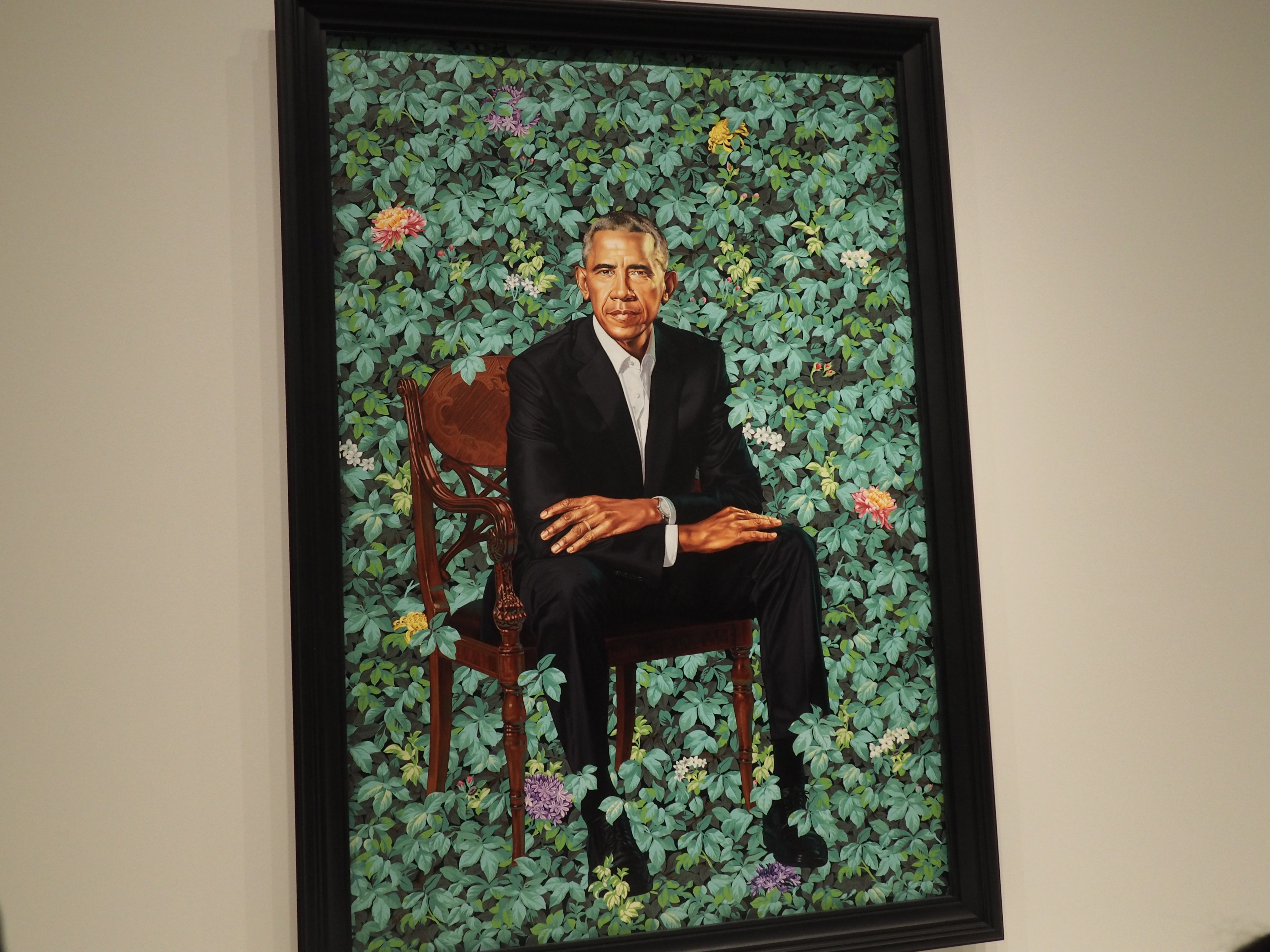
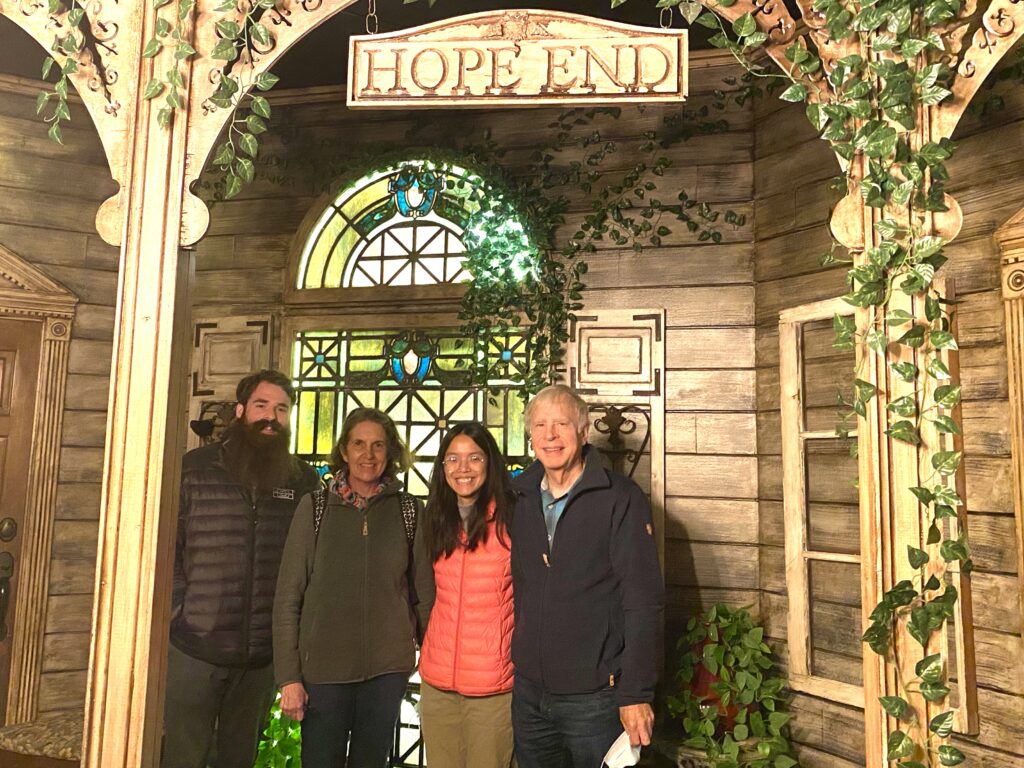

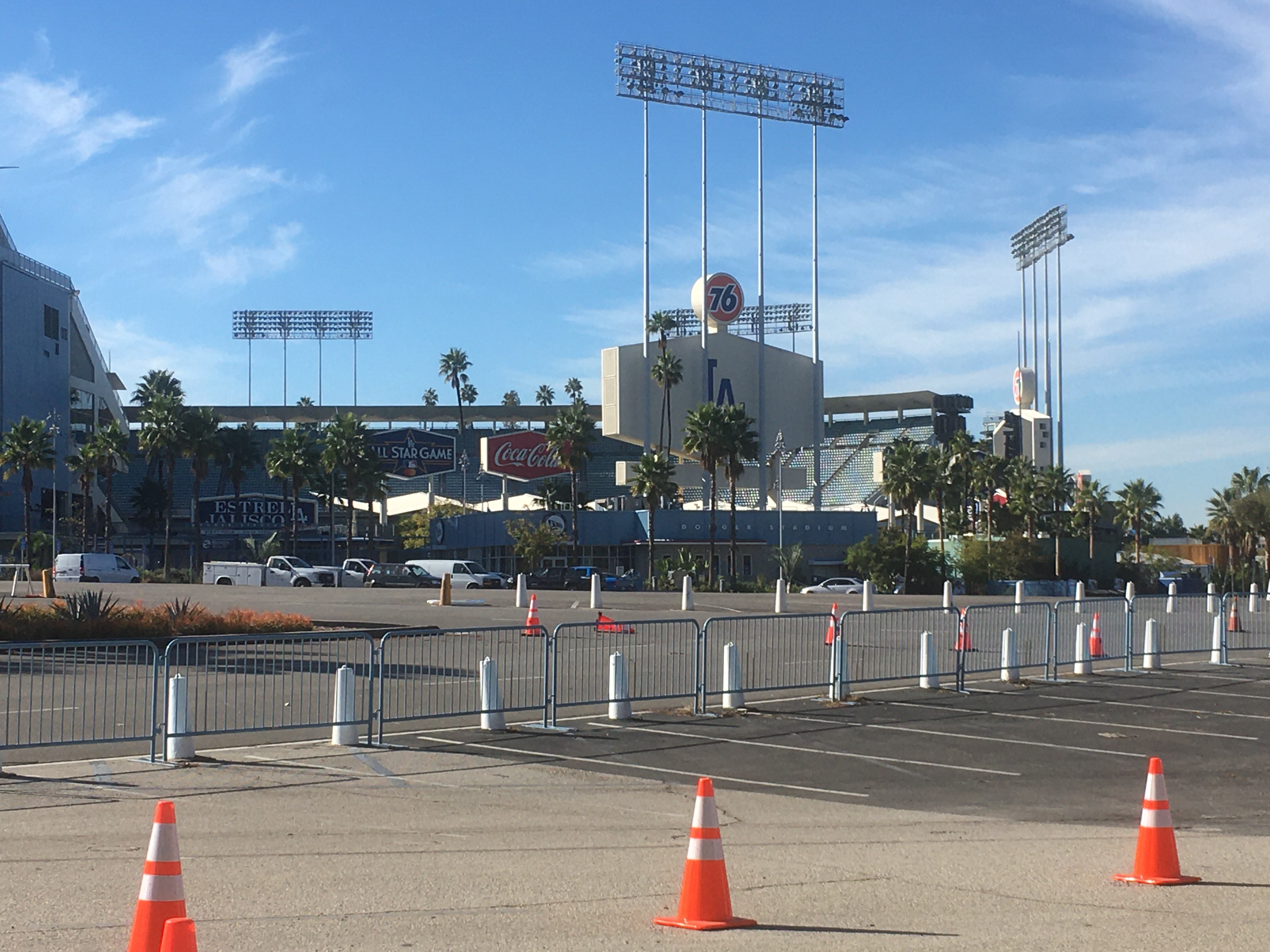
Another amazing trip. Thank you for sharing. We always look forward to your posts and learning from your adventures!
Merry Christmas!
Catherine and Philip
Looks like fun! Will have to check out the museums next time we’re out there!